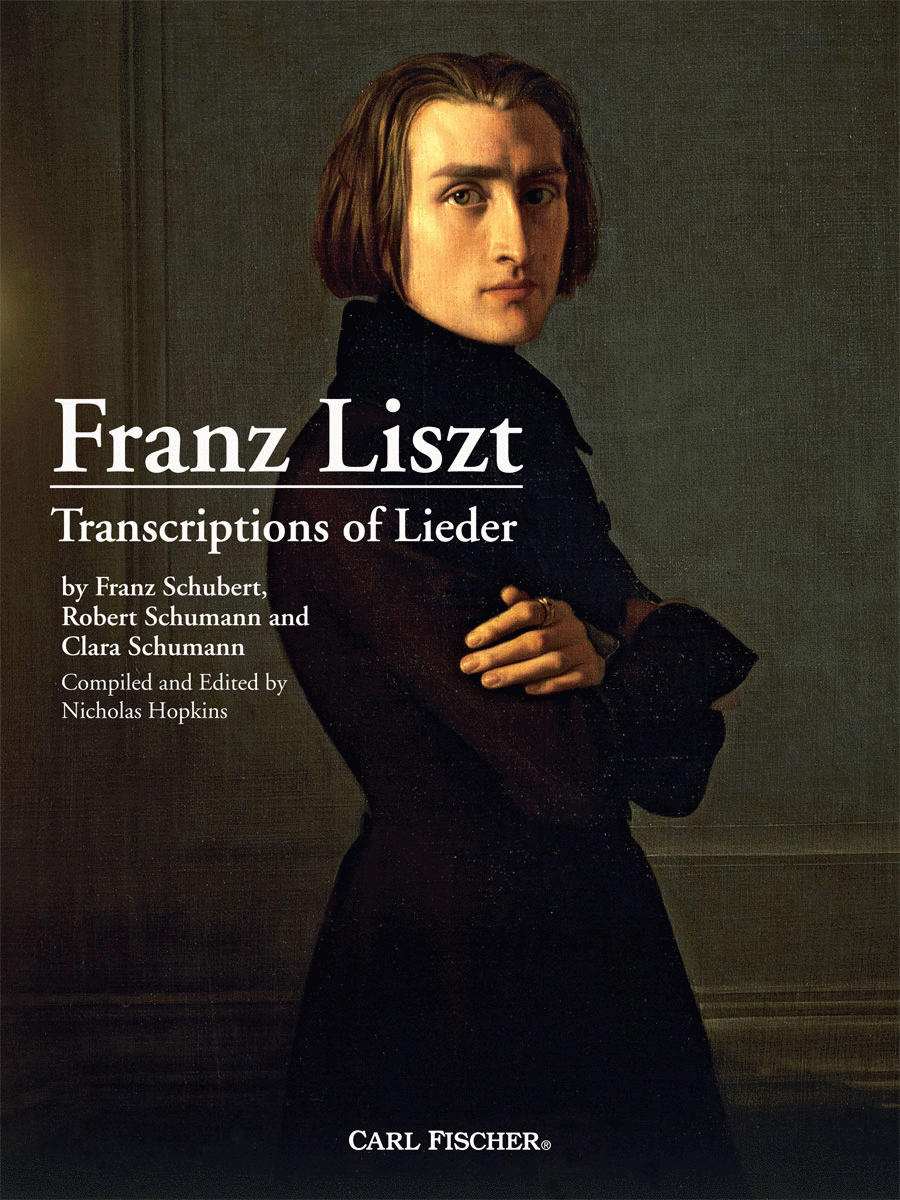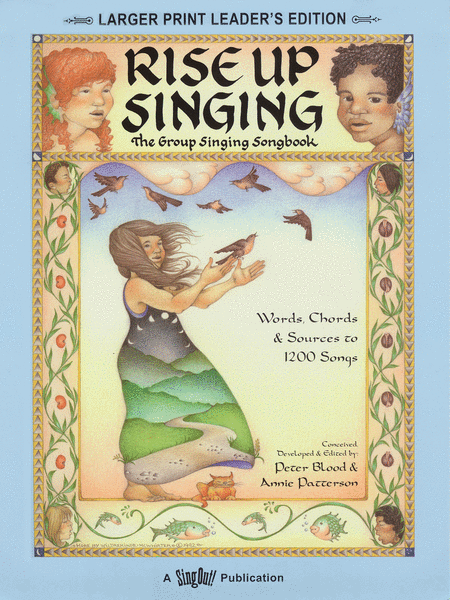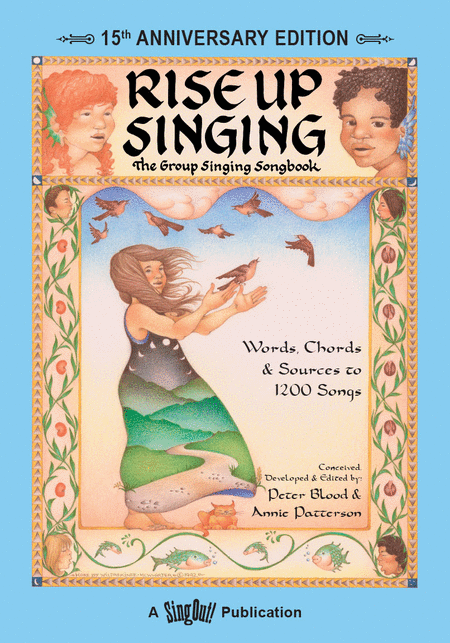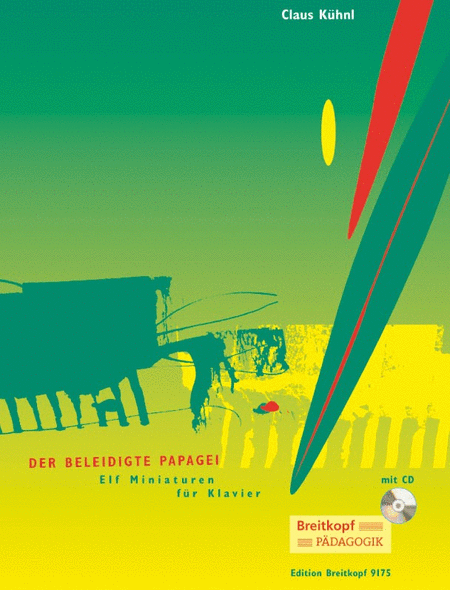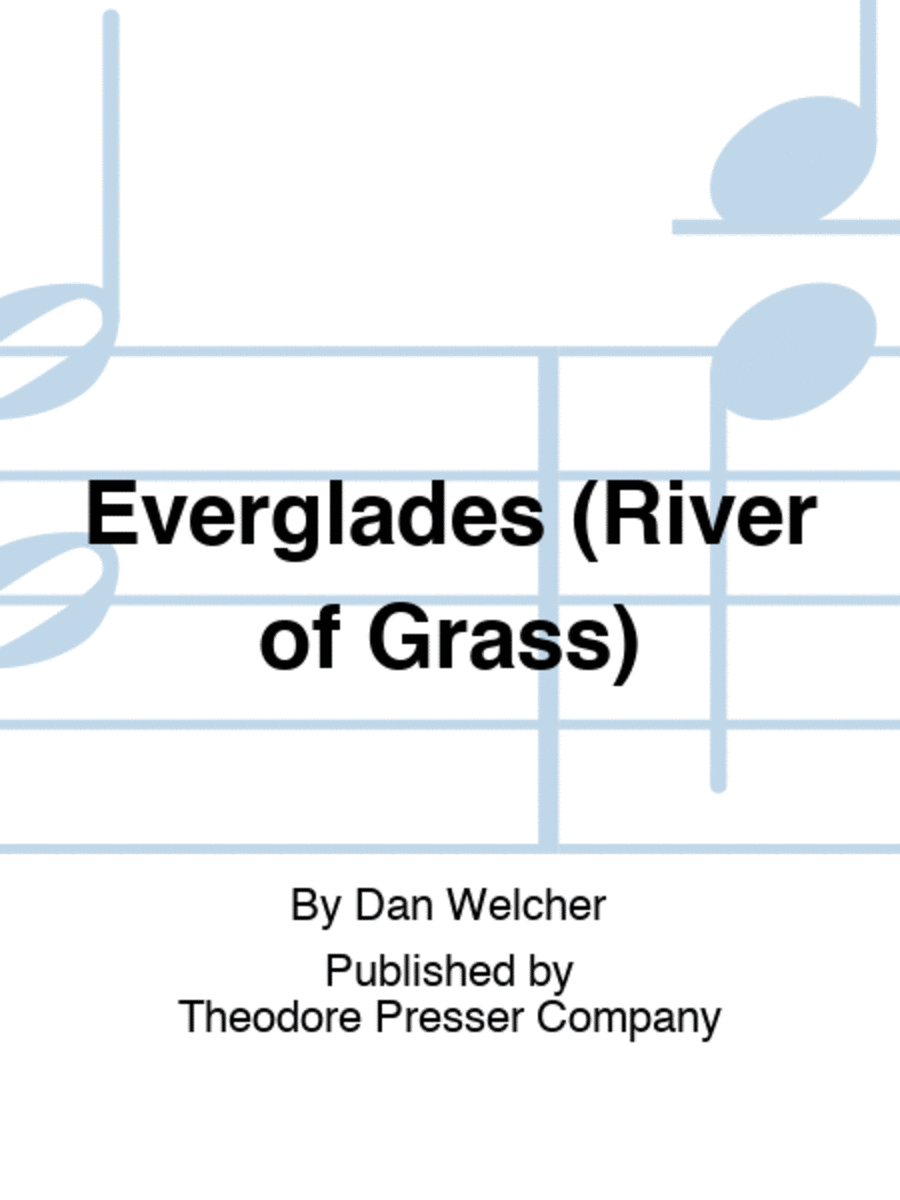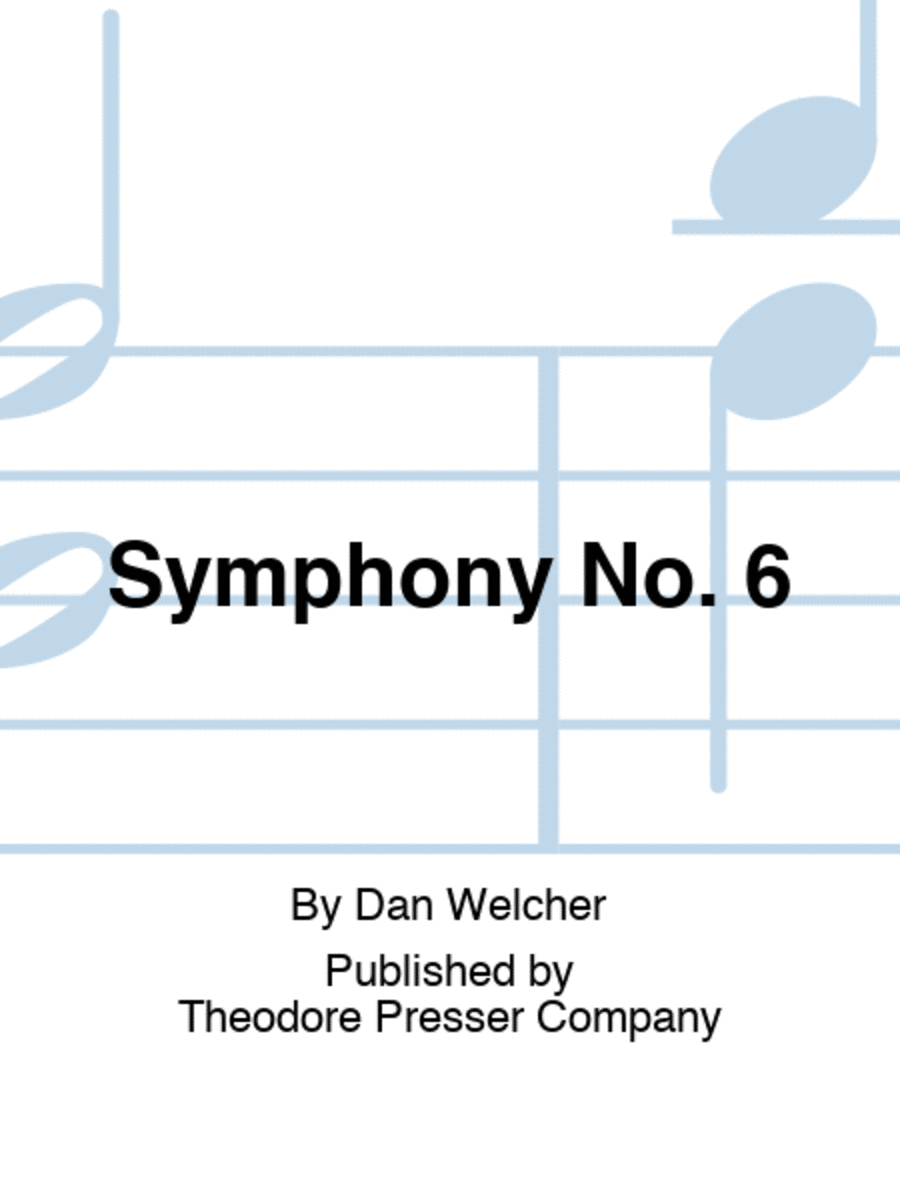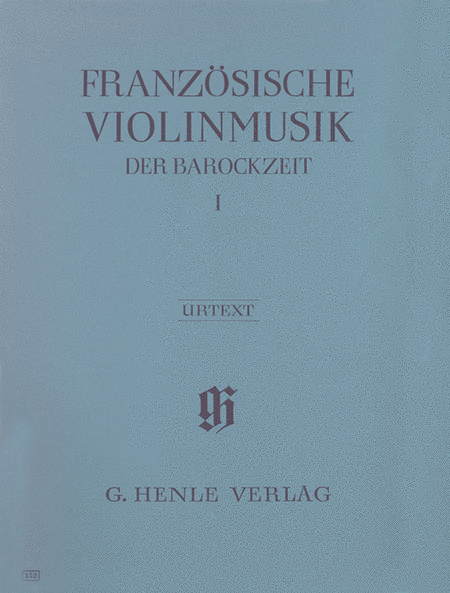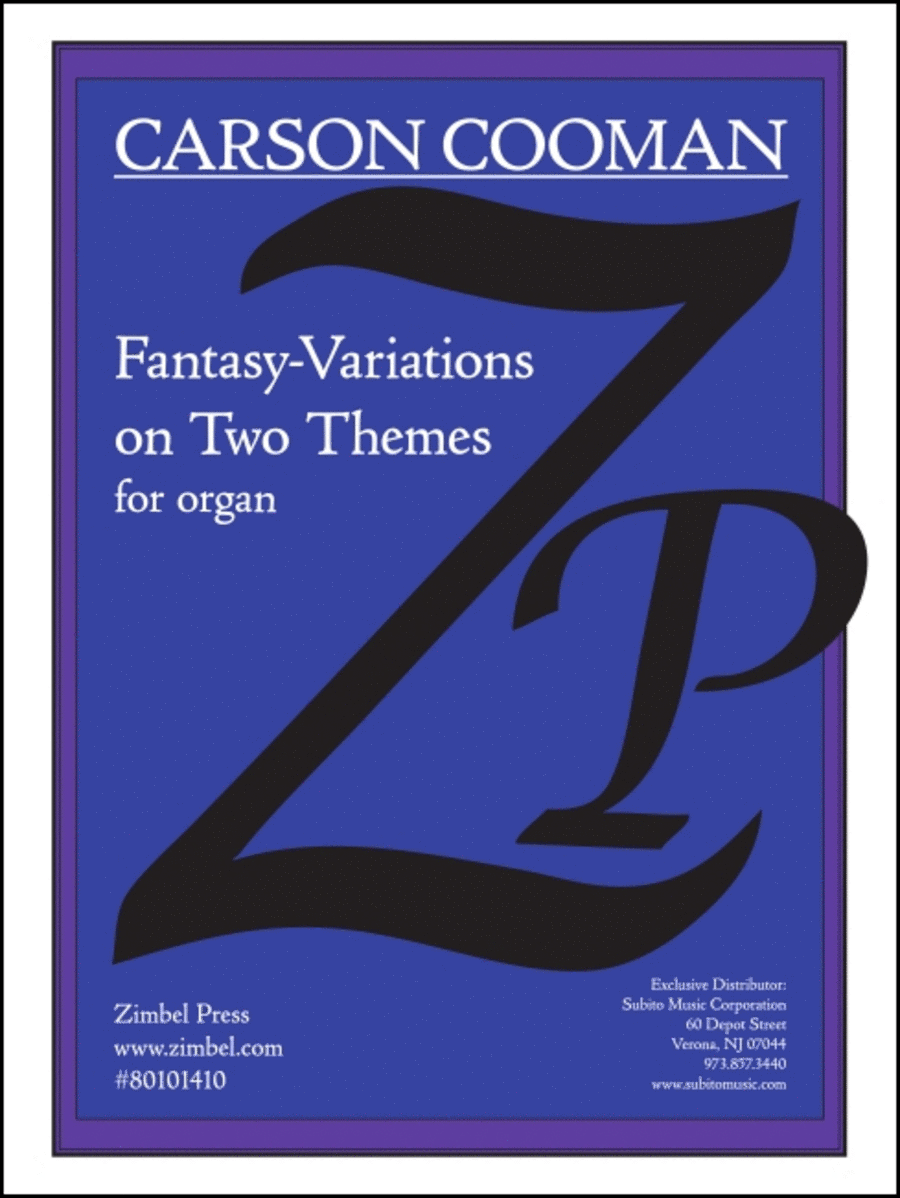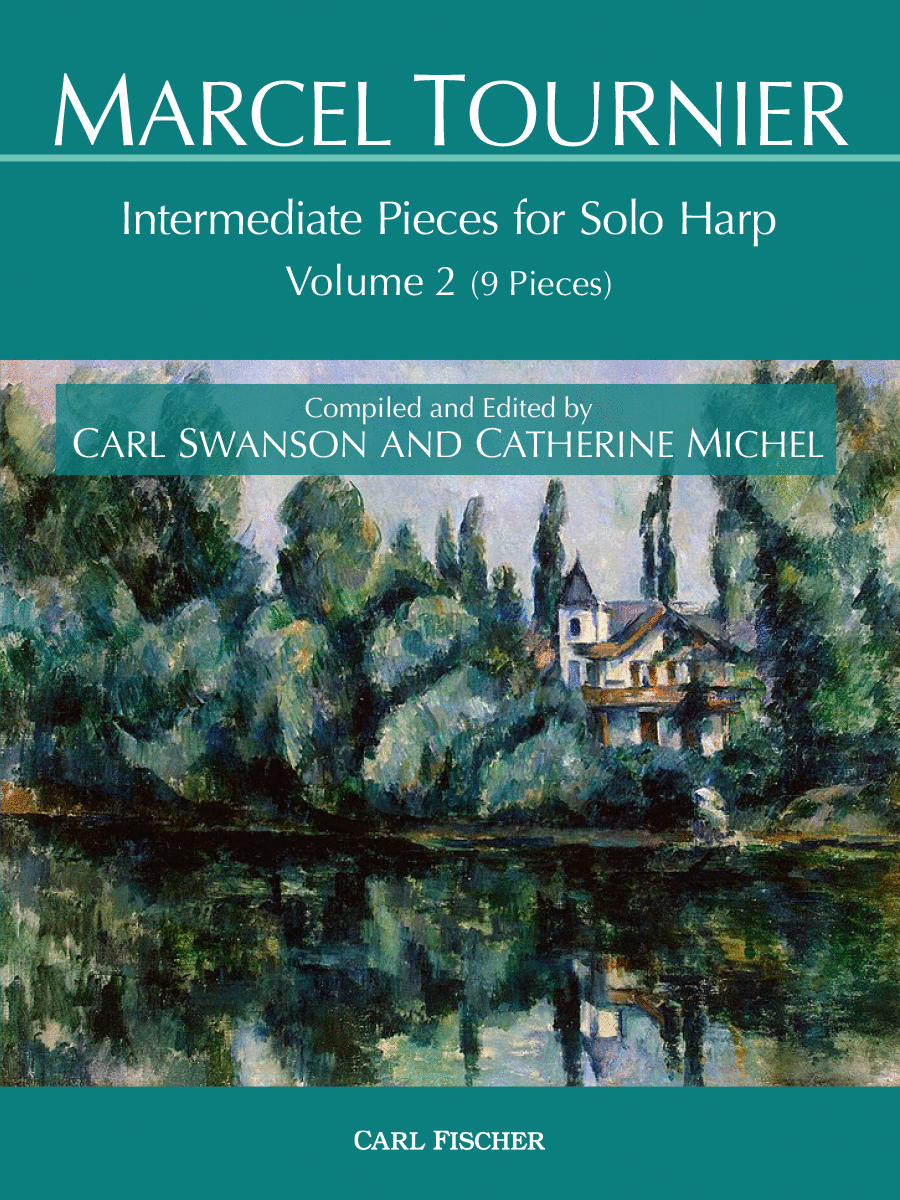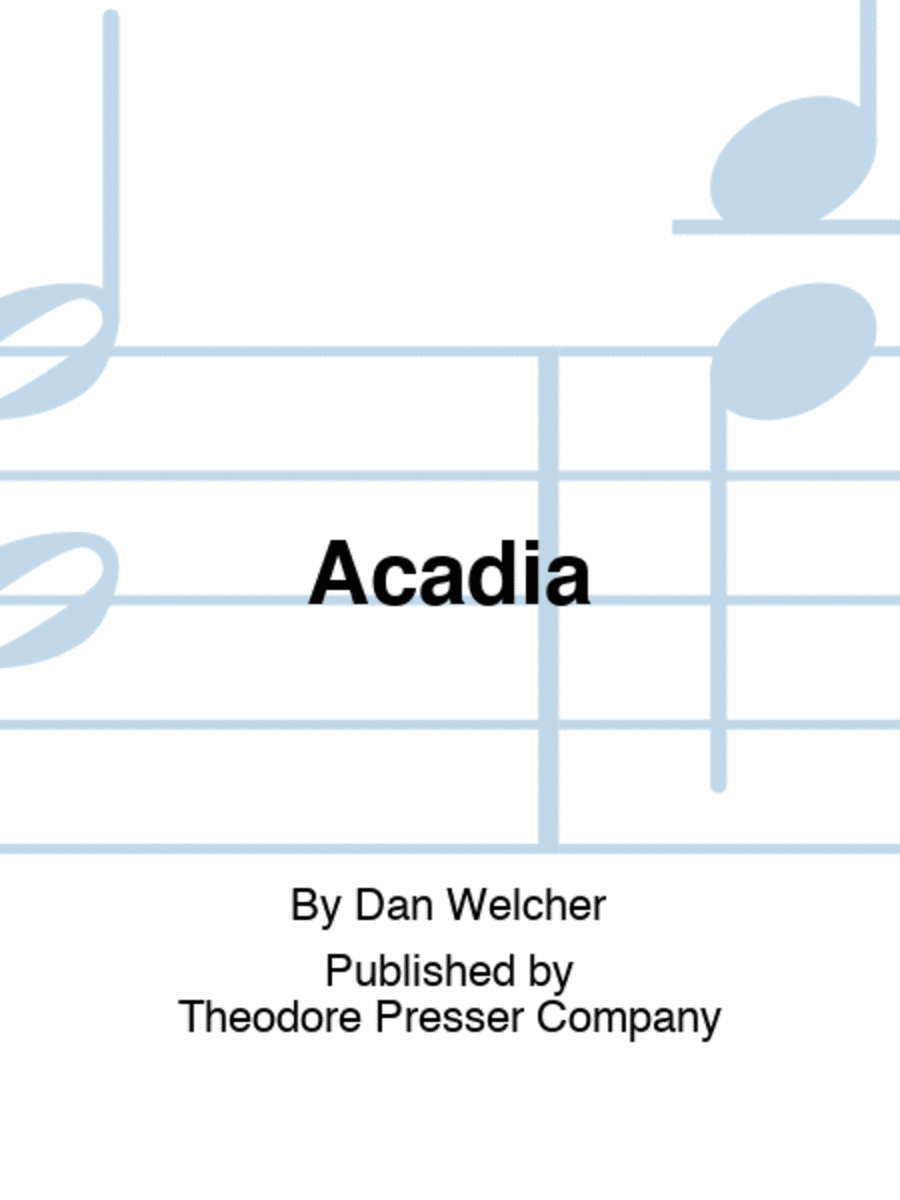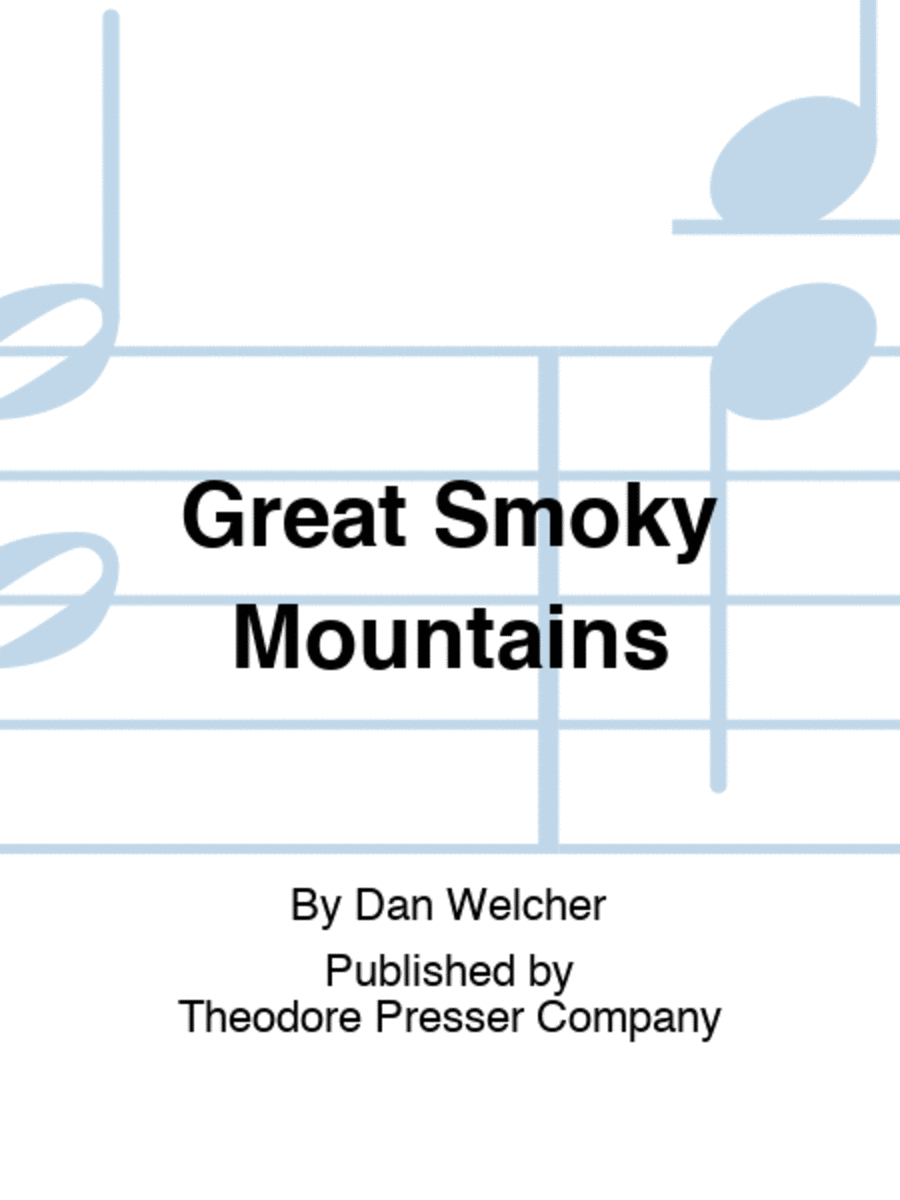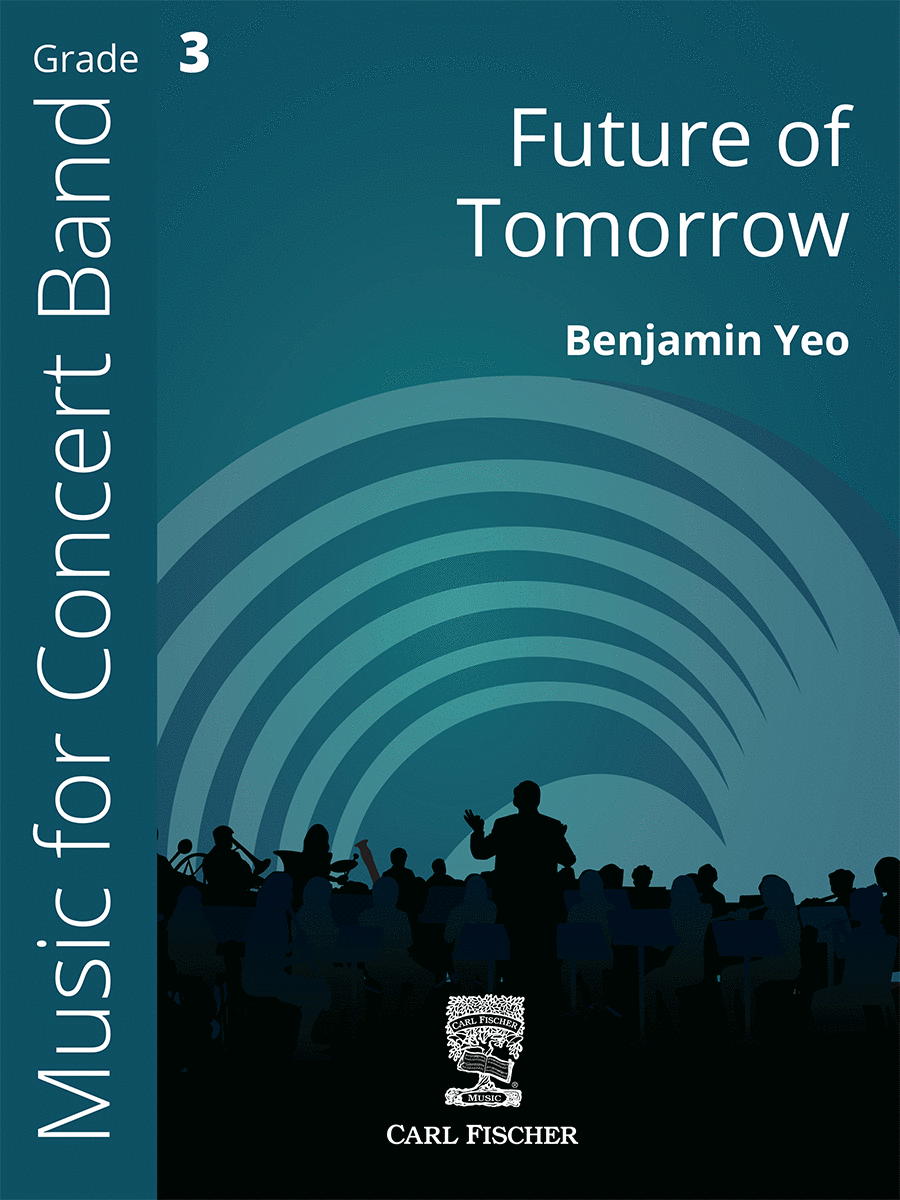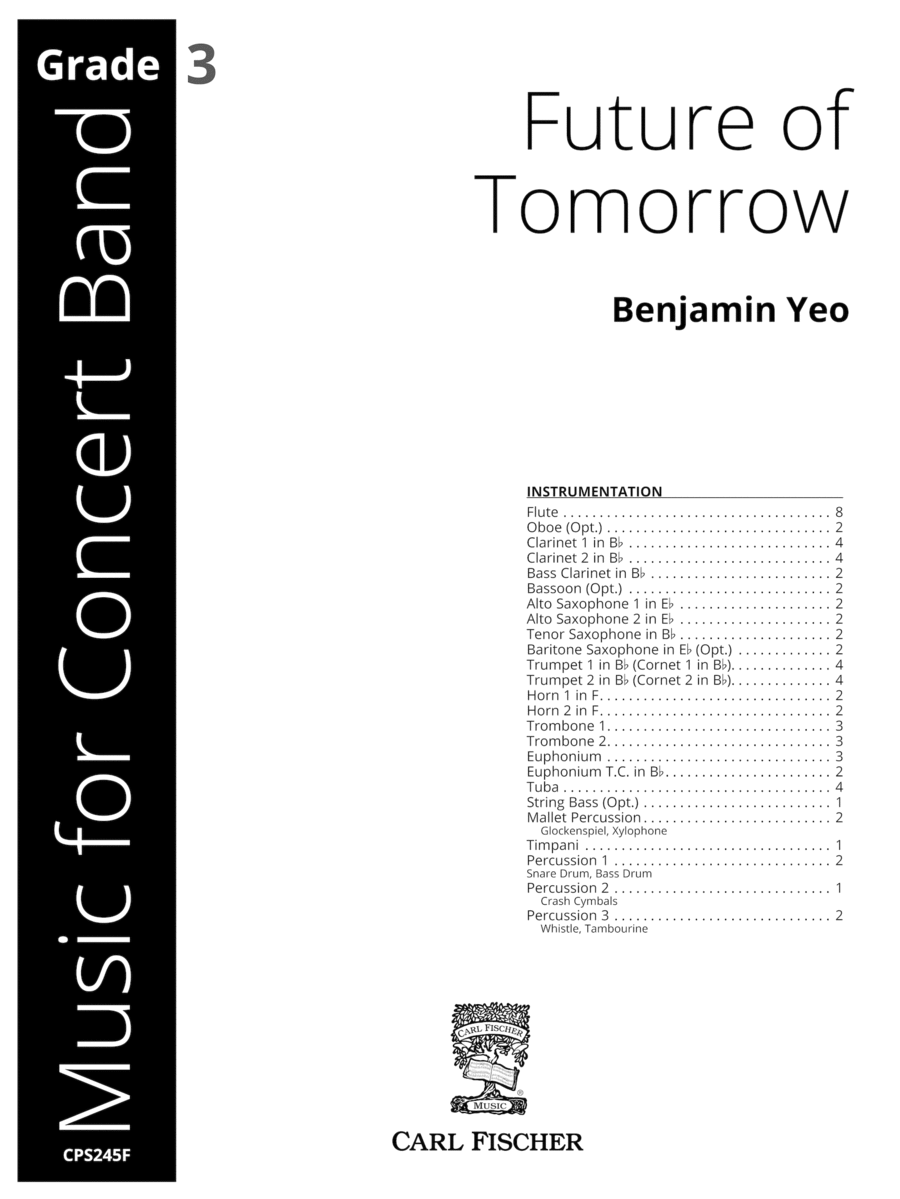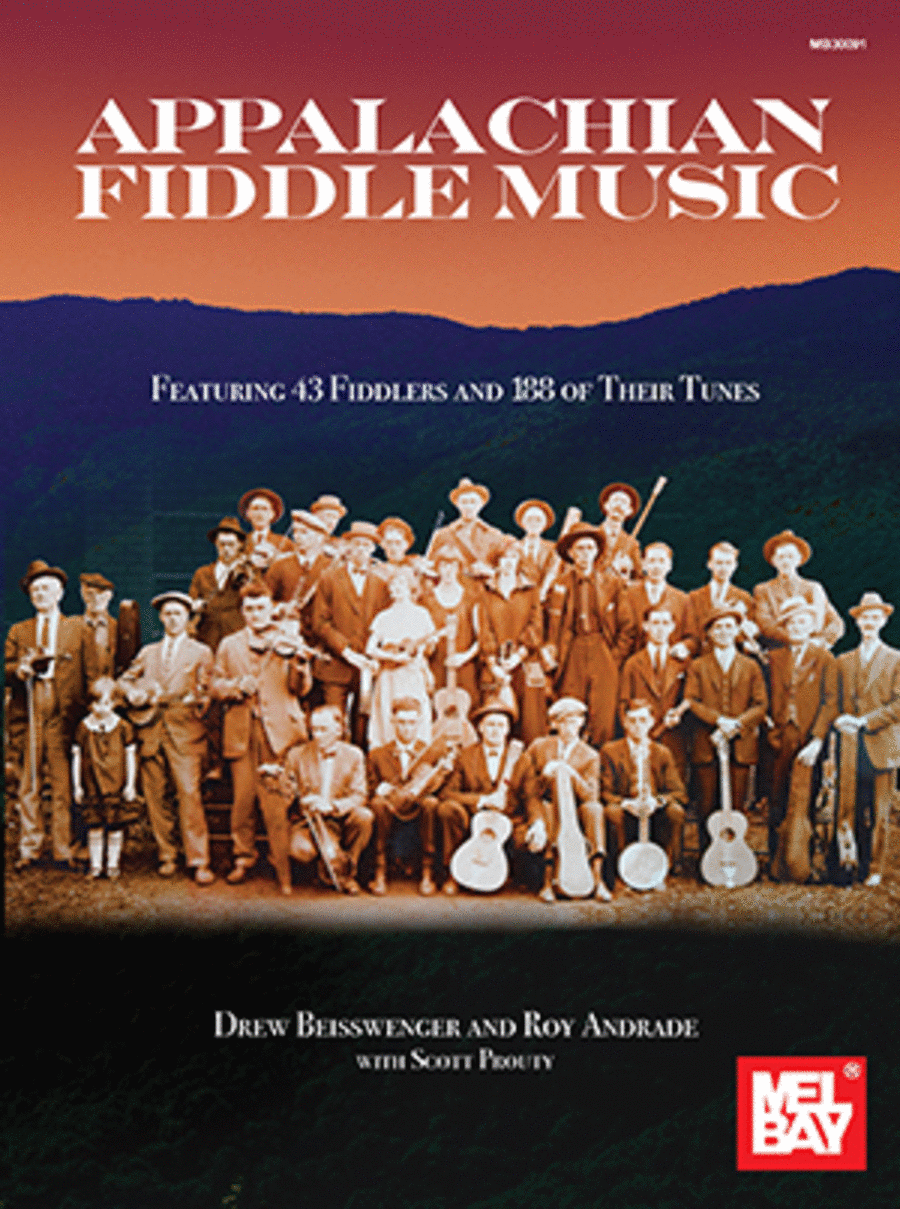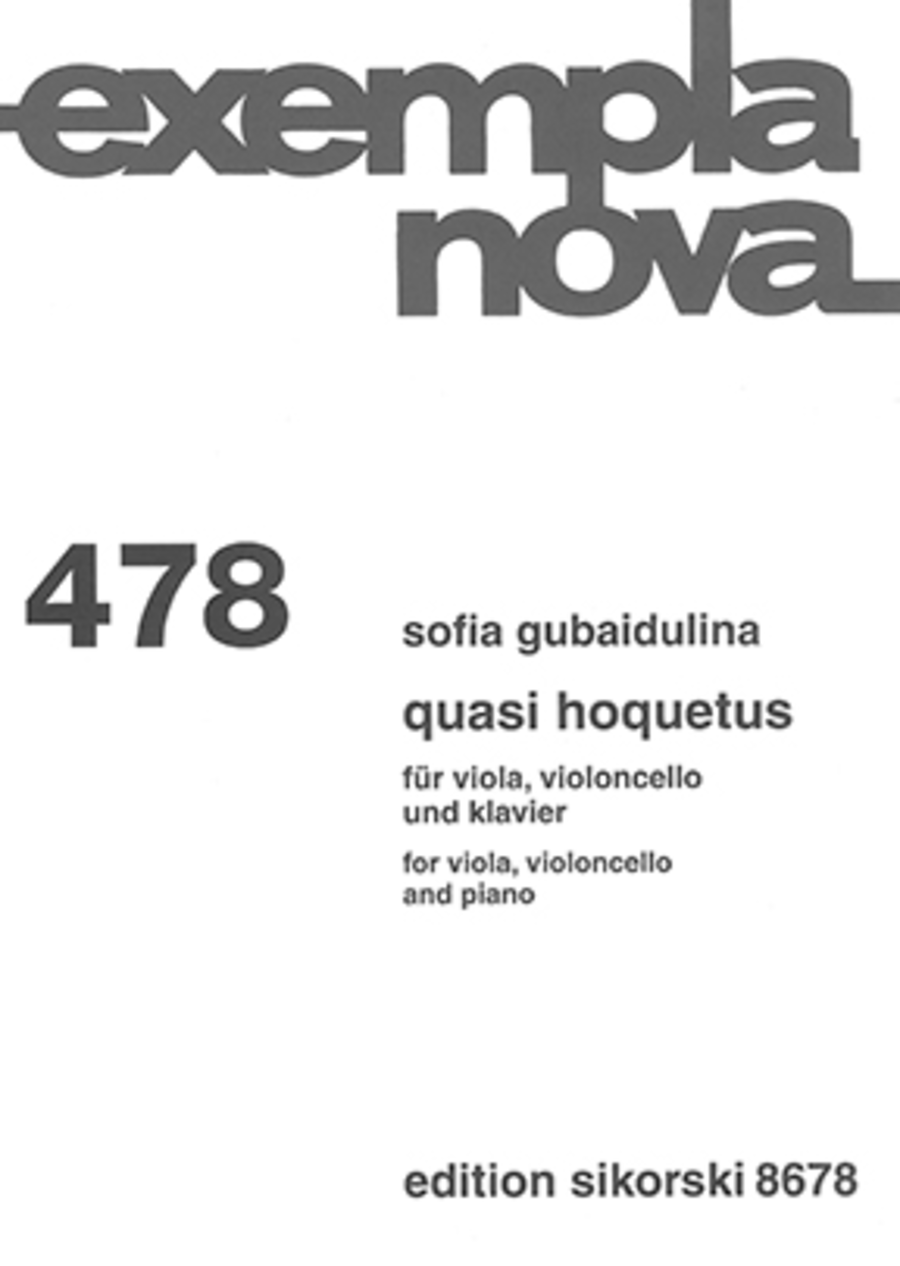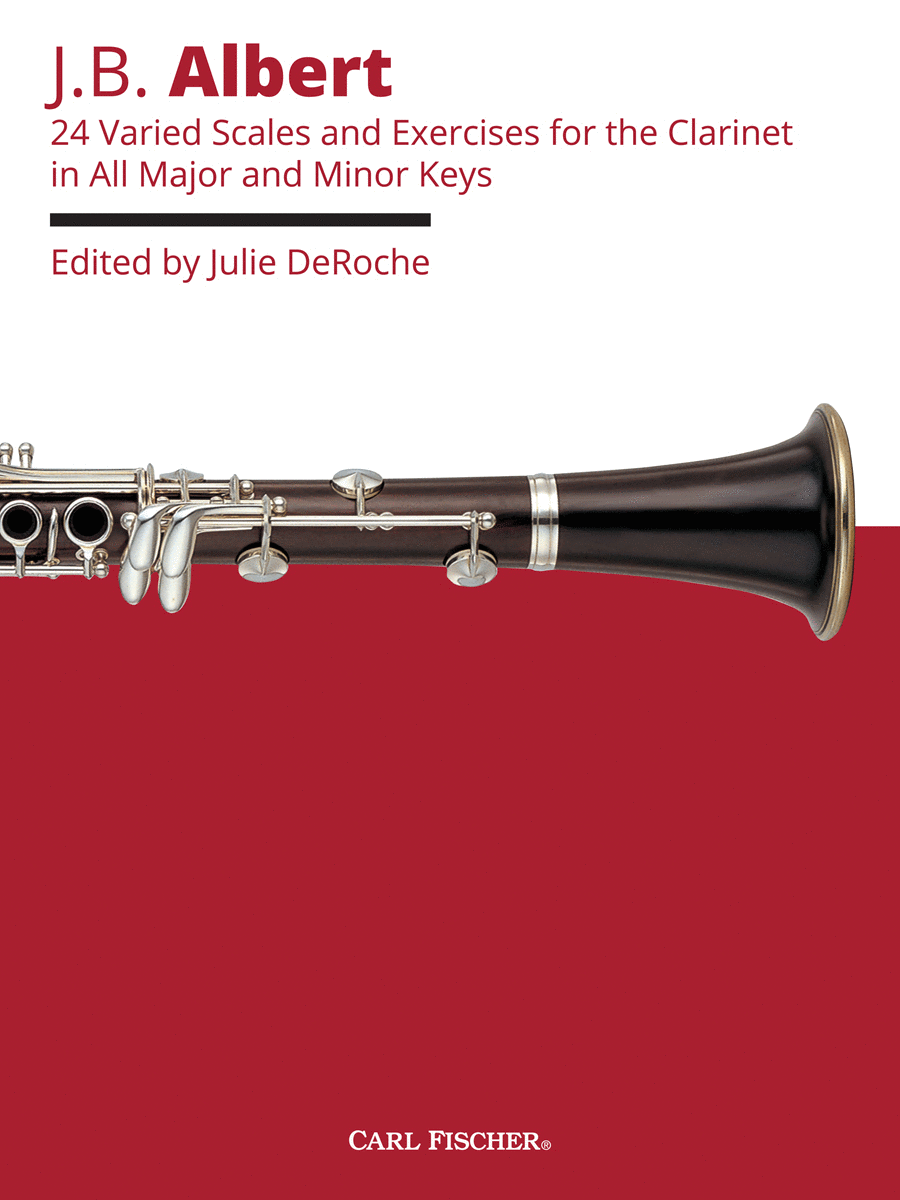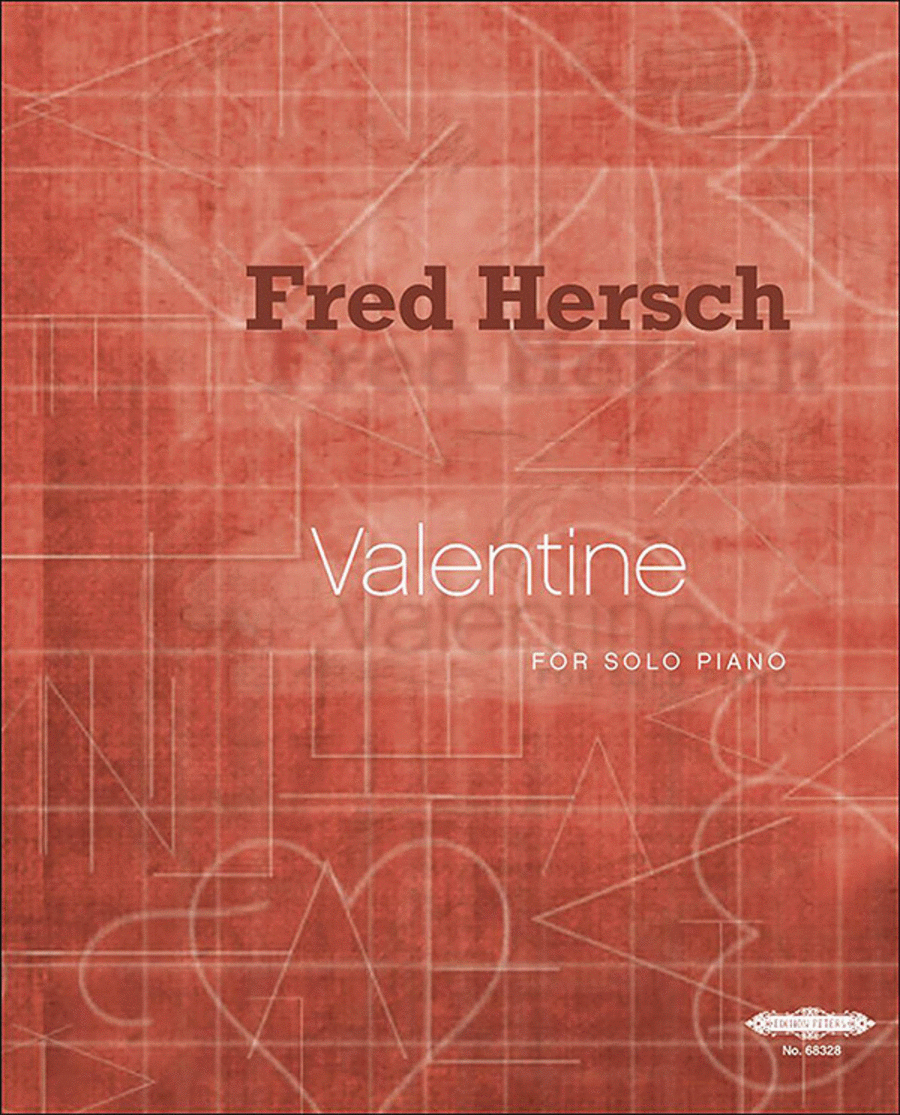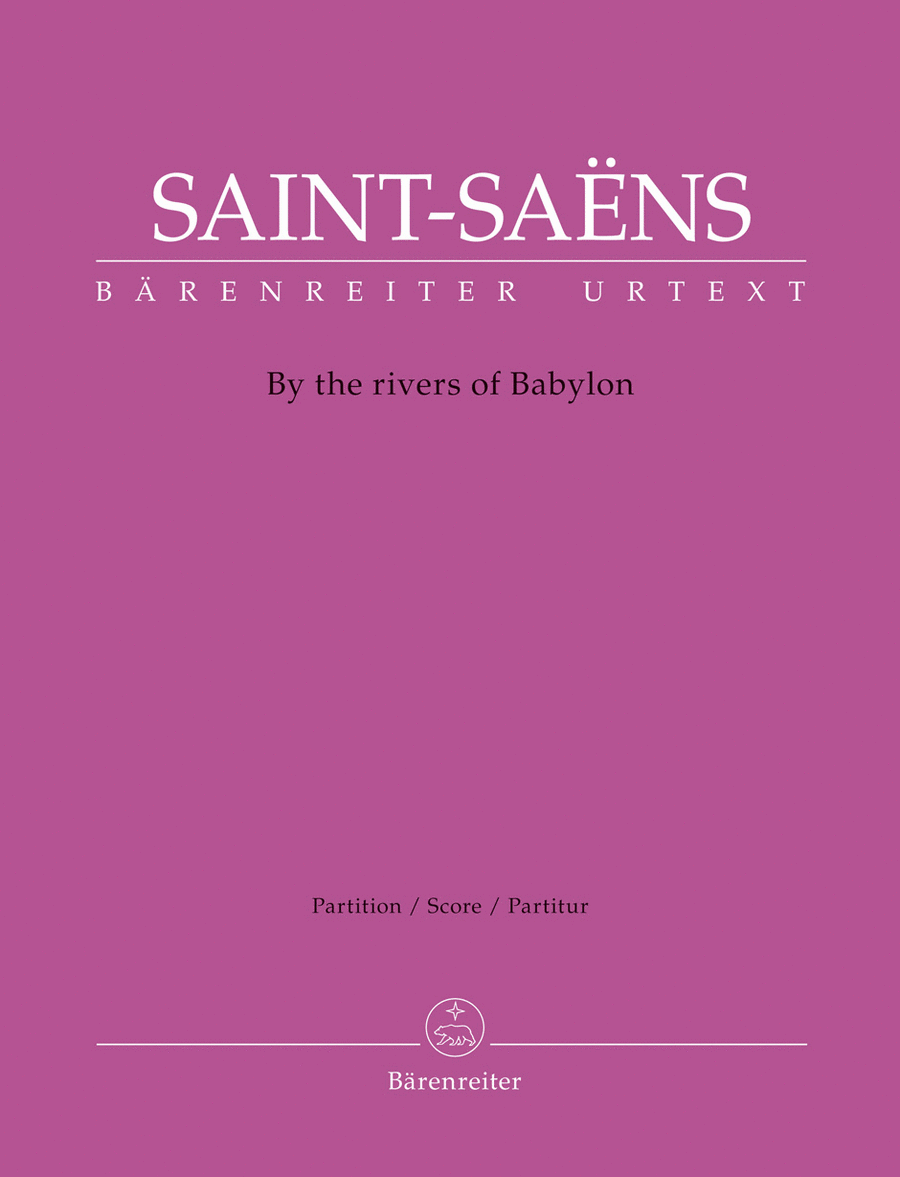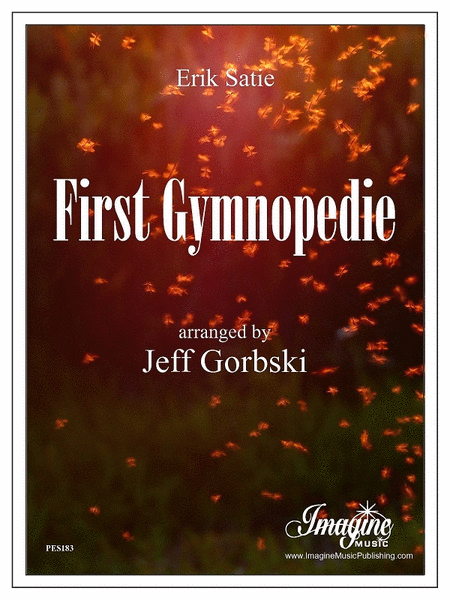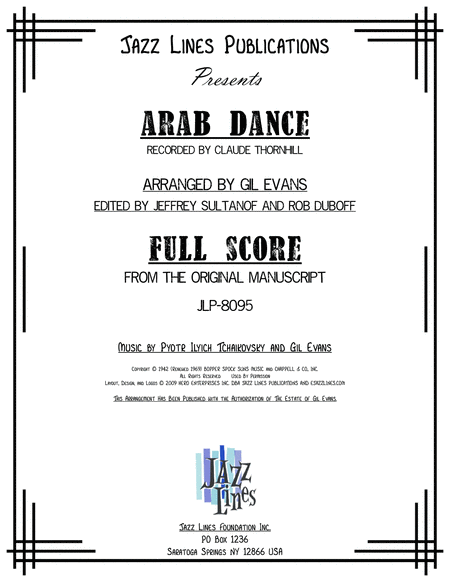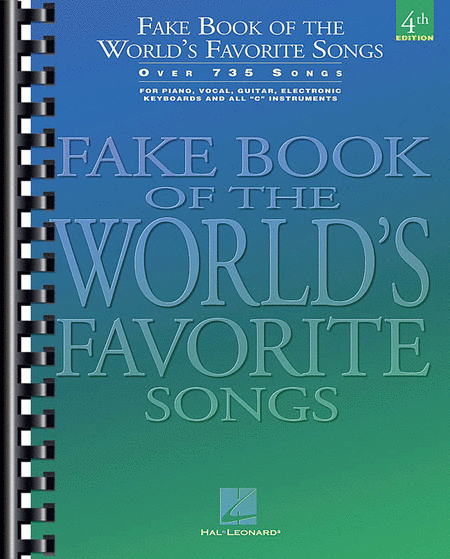|
| Transcriptions of Lieder
Piano seul
Carl Fischer
Chamber Music Piano SKU: CF.PL1056 Composed by Clara Wieck-Schumann, Fran...(+)
Chamber Music Piano
SKU: CF.PL1056
Composed by Clara
Wieck-Schumann, Franz
Schubert, and Robert
Schumann. Edited by
Nicholas Hopkins.
Collection. With Standard
notation. 128 pages. Carl
Fischer Music #PL1056.
Published by Carl Fischer
Music (CF.PL1056).
ISBN 9781491153390.
UPC: 680160910892.
Transcribed by Franz
Liszt. Introduction
It is true that Schubert
himself is somewhat to
blame for the very
unsatisfactory manner in
which his admirable piano
pieces are treated. He
was too immoderately
productive, wrote
incessantly, mixing
insignificant with
important things, grand
things with mediocre
work, paid no heed to
criticism, and always
soared on his wings. Like
a bird in the air, he
lived in music and sang
in angelic fashion.
--Franz Liszt, letter to
Dr. S. Lebert (1868) Of
those compositions that
greatly interest me,
there are only Chopin's
and yours. --Franz Liszt,
letter to Robert Schumann
(1838) She [Clara
Schumann] was astounded
at hearing me. Her
compositions are really
very remarkable,
especially for a woman.
There is a hundred times
more creativity and real
feeling in them than in
all the past and present
fantasias by Thalberg.
--Franz Liszt, letter to
Marie d'Agoult (1838)
Chretien Urhan
(1790-1845) was a
Belgian-born violinist,
organist and composer who
flourished in the musical
life of Paris in the
early nineteenth century.
According to various
accounts, he was deeply
religious, harshly
ascetic and wildly
eccentric, though revered
by many important and
influential members of
the Parisian musical
community. Regrettably,
history has forgotten
Urhan's many musical
achievements, the most
important of which was
arguably his pioneering
work in promoting the
music of Franz Schubert.
He devoted much of his
energies to championing
Schubert's music, which
at the time was unknown
outside of Vienna.
Undoubtedly, Urhan was
responsible for
stimulating this
enthusiasm in Franz
Liszt; Liszt regularly
heard Urhan's organ
playing in the
St.-Vincent-de-Paul
church in Paris, and the
two became personal
acquaintances. At
eighteen years of age,
Liszt was on the verge of
establishing himself as
the foremost pianist in
Europe, and this
awakening to Schubert's
music would prove to be a
profound experience.
Liszt's first travels
outside of his native
provincial Hungary were
to Vienna in 1821-1823,
where his father enrolled
him in studies with Carl
Czerny (piano) and
Antonio Salieri (music
theory). Both men had
important involvements
with Schubert; Czerny
(like Urhan) as performer
and advocate of
Schubert's music and
Salieri as his theory and
composition teacher from
1813-1817. Curiously,
Liszt and Schubert never
met personally, despite
their geographical
proximity in Vienna
during these years.
Inevitably, legends later
arose that the two had
been personal
acquaintances, although
Liszt would dismiss these
as fallacious: I never
knew Schubert personally,
he was once quoted as
saying. Liszt's initial
exposure to Schubert's
music was the Lieder,
what Urhan prized most of
all. He accompanied the
tenor Benedict
Randhartinger in numerous
performances of
Schubert's Lieder and
then, perhaps realizing
that he could benefit the
composer more on his own
terms, transcribed a
number of the Lieder for
piano solo. Many of these
transcriptions he would
perform himself on
concert tour during the
so-called Glanzzeit, or
time of splendor from
1839-1847. This publicity
did much to promote
reception of Schubert's
music throughout Europe.
Once Liszt retired from
the concert stage and
settled in Weimar as a
conductor in the 1840s,
he continued to perform
Schubert's orchestral
music, his Symphony No. 9
being a particular
favorite, and is credited
with giving the world
premiere performance of
Schubert's opera Alfonso
und Estrella in 1854. At
this time, he
contemplated writing a
biography of the
composer, which
regrettably remained
uncompleted. Liszt's
devotion to Schubert
would never waver.
Liszt's relationship with
Robert and Clara Schumann
was far different and far
more complicated; by
contrast, they were all
personal acquaintances.
What began as a
relationship of mutual
respect and admiration
soon deteriorated into
one of jealousy and
hostility, particularly
on the Schumann's part.
Liszt's initial contact
with Robert's music
happened long before they
had met personally, when
Liszt published an
analysis of Schumann's
piano music for the
Gazette musicale in 1837,
a gesture that earned
Robert's deep
appreciation. In the
following year Clara met
Liszt during a concert
tour in Vienna and
presented him with more
of Schumann's piano
music. Clara and her
father Friedrich Wieck,
who accompanied Clara on
her concert tours, were
quite taken by Liszt: We
have heard Liszt. He can
be compared to no other
player...he arouses
fright and astonishment.
His appearance at the
piano is indescribable.
He is an original...he is
absorbed by the piano.
Liszt, too, was impressed
with Clara--at first the
energy, intelligence and
accuracy of her piano
playing and later her
compositions--to the
extent that he dedicated
to her the 1838 version
of his Etudes d'execution
transcendante d'apres
Paganini. Liszt had a
closer personal
relationship with Clara
than with Robert until
the two men finally met
in 1840. Schumann was
astounded by Liszt's
piano playing. He wrote
to Clara that Liszt had
played like a god and had
inspired indescribable
furor of applause. His
review of Liszt even
included a heroic
personification with
Napoleon. In Leipzig,
Schumann was deeply
impressed with Liszt's
interpretations of his
Noveletten, Op. 21 and
Fantasy in C Major, Op.
17 (dedicated to Liszt),
enthusiastically
observing that, I feel as
if I had known you twenty
years. Yet a variety of
events followed that
diminished Liszt's glory
in the eyes of the
Schumanns. They became
critical of the cult-like
atmosphere that arose
around his recitals, or
Lisztomania as it came to
be called; conceivably,
this could be attributed
to professional jealousy.
Clara, in particular,
came to loathe Liszt,
noting in a letter to
Joseph Joachim, I despise
Liszt from the depths of
my soul. She recorded a
stunning diary entry a
day after Liszt's death,
in which she noted, He
was an eminent keyboard
virtuoso, but a dangerous
example for the
young...As a composer he
was terrible. By
contrast, Liszt did not
share in these negative
sentiments; no evidence
suggests that he had any
ill-regard for the
Schumanns. In Weimar, he
did much to promote
Schumann's music,
conducting performances
of his Scenes from Faust
and Manfred, during a
time in which few
orchestras expressed
interest, and premiered
his opera Genoveva. He
later arranged a benefit
concert for Clara
following Robert's death,
featuring Clara as
soloist in Robert's Piano
Concerto, an event that
must have been
exhilarating to witness.
Regardless, her opinion
of him would never
change, despite his
repeated gestures of
courtesy and respect.
Liszt's relationship with
Schubert was a spiritual
one, with music being the
one and only link between
the two men. That with
the Schumanns was
personal, with music
influenced by a hero
worship that would
aggravate the
relationship over time.
Nonetheless, Liszt would
remain devoted to and
enthusiastic for the
music and achievements of
these composers. He would
be a vital force in
disseminating their music
to a wider audience, as
he would be with many
other composers
throughout his career.
His primary means for
accomplishing this was
the piano transcription.
Liszt and the
Transcription
Transcription versus
Paraphrase Transcription
and paraphrase were
popular terms in
nineteenth-century music,
although certainly not
unique to this period.
Musicians understood that
there were clear
distinctions between
these two terms, but as
is often the case these
distinctions could be
blurred. Transcription,
literally writing over,
entails reworking or
adapting a piece of music
for a performance medium
different from that of
its original; arrangement
is a possible synonym.
Adapting is a key part of
this process, for the
success of a
transcription relies on
the transcriber's ability
to adapt the piece to the
different medium. As a
result, the pre-existing
material is generally
kept intact, recognizable
and intelligible; it is
strict, literal,
objective. Contextual
meaning is maintained in
the process, as are
elements of style and
form. Paraphrase, by
contrast, implies
restating something in a
different manner, as in a
rewording of a document
for reasons of clarity.
In nineteenth-century
music, paraphrasing
indicated elaborating a
piece for purposes of
expressive virtuosity,
often as a vehicle for
showmanship. Variation is
an important element, for
the source material may
be varied as much as the
paraphraser's imagination
will allow; its purpose
is metamorphosis.
Transcription is adapting
and arranging;
paraphrasing is
transforming and
reworking. Transcription
preserves the style of
the original; paraphrase
absorbs the original into
a different style.
Transcription highlights
the original composer;
paraphrase highlights the
paraphraser.
Approximately half of
Liszt's compositional
output falls under the
category of transcription
and paraphrase; it is
noteworthy that he never
used the term
arrangement. Much of his
early compositional
activities were
transcriptions and
paraphrases of works of
other composers, such as
the symphonies of
Beethoven and Berlioz,
vocal music by Schubert,
and operas by Donizetti
and Bellini. It is
conceivable that he
focused so intently on
work of this nature early
in his career as a means
to perfect his
compositional technique,
although transcription
and paraphrase continued
well after the technique
had been mastered; this
might explain why he
drastically revised and
rewrote many of his
original compositions
from the 1830s (such as
the Transcendental Etudes
and Paganini Etudes) in
the 1850s. Charles Rosen,
a sympathetic interpreter
of Liszt's piano works,
observes, The new
revisions of the
Transcendental Etudes are
not revisions but concert
paraphrases of the old,
and their art lies in the
technique of
transformation. The
Paganini etudes are piano
transcriptions of violin
etudes, and the
Transcendental Etudes are
piano transcriptions of
piano etudes. The
principles are the same.
He concludes by noting,
Paraphrase has shaded off
into
composition...Composition
and paraphrase were not
identical for him, but
they were so closely
interwoven that
separation is impossible.
The significance of
transcription and
paraphrase for Liszt the
composer cannot be
overstated, and the
mutual influence of each
needs to be better
understood. Undoubtedly,
Liszt the composer as we
know him today would be
far different had he not
devoted so much of his
career to transcribing
and paraphrasing the
music of others. He was
perhaps one of the first
composers to contend that
transcription and
paraphrase could be
genuine art forms on
equal par with original
pieces; he even claimed
to be the first to use
these two terms to
describe these classes of
arrangements. Despite the
success that Liszt
achieved with this type
of work, others viewed it
with circumspection and
criticism. Robert
Schumann, although deeply
impressed with Liszt's
keyboard virtuosity, was
harsh in his criticisms
of the transcriptions.
Schumann interpreted them
as indicators that
Liszt's virtuosity had
hindered his
compositional development
and suggested that Liszt
transcribed the music of
others to compensate for
his own compositional
deficiencies.
Nonetheless, Liszt's
piano transcriptions,
what he sometimes called
partitions de piano (or
piano scores), were
instrumental in promoting
composers whose music was
unknown at the time or
inaccessible in areas
outside of major European
capitals, areas that
Liszt willingly toured
during his Glanzzeit. To
this end, the
transcriptions had to be
literal arrangements for
the piano; a Beethoven
symphony could not be
introduced to an
unknowing audience if its
music had been subjected
to imaginative
elaborations and
variations. The same
would be true of the 1833
transcription of
Berlioz's Symphonie
fantastique (composed
only three years
earlier), the
astonishingly novel
content of which would
necessitate a literal and
intelligible rendering.
Opera, usually more
popular and accessible
for the general public,
was a different matter,
and in this realm Liszt
could paraphrase the
original and manipulate
it as his imagination
would allow without
jeopardizing its
reception; hence, the
paraphrases on the operas
of Bellini, Donizetti,
Mozart, Meyerbeer and
Verdi. Reminiscence was
another term coined by
Liszt for the opera
paraphrases, as if the
composer were reminiscing
at the keyboard following
a memorable evening at
the opera. Illustration
(reserved on two
occasions for Meyerbeer)
and fantasy were
additional terms. The
operas of Wagner were
exceptions. His music was
less suited to paraphrase
due to its general lack
of familiarity at the
time. Transcription of
Wagner's music was thus
obligatory, as it was of
Beethoven's and Berlioz's
music; perhaps the
composer himself insisted
on this approach. Liszt's
Lieder Transcriptions
Liszt's initial
encounters with
Schubert's music, as
mentioned previously,
were with the Lieder. His
first transcription of a
Schubert Lied was Die
Rose in 1833, followed by
Lob der Tranen in 1837.
Thirty-nine additional
transcriptions appeared
at a rapid pace over the
following three years,
and in 1846, the Schubert
Lieder transcriptions
would conclude, by which
point he had completed
fifty-eight, the most of
any composer. Critical
response to these
transcriptions was highly
favorable--aside from the
view held by
Schumann--particularly
when Liszt himself played
these pieces in concert.
Some were published
immediately by Anton
Diabelli, famous for the
theme that inspired
Beethoven's variations.
Others were published by
the Viennese publisher
Tobias Haslinger (one of
Beethoven's and
Schubert's publishers in
the 1820s), who sold his
reserves so quickly that
he would repeatedly plead
for more. However,
Liszt's enthusiasm for
work of this nature soon
became exhausted, as he
noted in a letter of 1839
to the publisher
Breitkopf und Hartel:
That good Haslinger
overwhelms me with
Schubert. I have just
sent him twenty-four new
songs (Schwanengesang and
Winterreise), and for the
moment I am rather tired
of this work. Haslinger
was justified in his
demands, for the Schubert
transcriptions were
received with great
enthusiasm. One Gottfried
Wilhelm Fink, then editor
of the Allgemeine
musikalische Zeitung,
observed of these
transcriptions: Nothing
in recent memory has
caused such sensation and
enjoyment in both
pianists and audiences as
these arrangements...The
demand for them has in no
way been satisfied; and
it will not be until
these arrangements are
seen on pianos
everywhere. They have
indeed made quite a
splash. Eduard Hanslick,
never a sympathetic
critic of Liszt's music,
acknowledged thirty years
after the fact that,
Liszt's transcriptions of
Schubert Lieder were
epoch-making. There was
hardly a concert in which
Liszt did not have to
play one or two of
them--even when they were
not listed on the
program. These
transcriptions quickly
became some of his most
sough-after pieces,
despite their extreme
technical demands.
Leading pianists of the
day, such as Clara Wieck
and Sigismond Thalberg,
incorporated them into
their concert programs
immediately upon
publication. Moreover,
the transcriptions would
serve as inspirations for
other composers, such as
Stephen Heller, Cesar
Franck and later Leopold
Godowsky, all of whom
produced their own
transcriptions of
Schubert's Lieder. Liszt
would transcribe the
Lieder of other composers
as well, including those
by Mendelssohn, Chopin,
Anton Rubinstein and even
himself. Robert Schumann,
of course, would not be
ignored. The first
transcription of a
Schumann Lied was the
celebrated Widmung from
Myrten in 1848, the only
Schumann transcription
that Liszt completed
during the composer's
lifetime. (Regrettably,
there is no evidence of
Schumann's regard of this
transcription, or even if
he was aware of it.) From
the years 1848-1881,
Liszt transcribed twelve
of Robert Schumann's
Lieder (including one
orchestral Lied) and
three of Clara (one from
each of her three
published Lieder cycles);
he would transcribe no
other works of these two
composers. The Schumann
Lieder transcriptions,
contrary to those of
Schubert, are literal
arrangements, posing, in
general, far fewer
demands on the pianist's
technique. They are
comparatively less
imaginative in their
treatment of the original
material. Additionally,
they seem to have been
less valued in their day
than the Schubert
transcriptions, and it is
noteworthy that none of
the Schumann
transcriptions bear
dedications, as most of
the Schubert
transcriptions do. The
greatest challenge posed
by Lieder transcriptions,
regardless of the
composer or the nature of
the transcription, was to
combine the vocal and
piano parts of the
original such that the
character of each would
be preserved, a challenge
unique to this form of
transcription. Each part
had to be intact and
aurally recognizable, the
vocal line in particular.
Complications could be
manifold in a Lied that
featured dissimilar
parts, such as Schubert's
Auf dem Wasser zu singen,
whose piano accompaniment
depicts the rocking of
the boat on the
shimmering waves while
the vocal line reflects
on the passing of time.
Similar complications
would be encountered in
Gretchen am Spinnrade, in
which the ubiquitous
sixteenth-note pattern in
the piano's right hand
epitomizes the
ever-turning spinning
wheel over which the
soprano voice expresses
feelings of longing and
heartache. The resulting
transcriptions for solo
piano would place
exceptional demands on
the pianist. The
complications would be
far less imposing in
instances in which voice
and piano were less
differentiated, as in
many of Schumann's Lieder
that Liszt transcribed.
The piano parts in these
Lieder are true
accompaniments for the
voice, providing harmonic
foundation and rhythmic
support by doubling the
vocal line throughout.
The transcriptions, thus,
are strict and literal,
with far fewer demands on
both pianist and
transcriber. In all of
Liszt's Lieder
transcriptions,
regardless of the way in
which the two parts are
combined, the melody
(i.e. the vocal line) is
invariably the focal
point; the melody should
sing on the piano, as if
it were the voice. The
piano part, although
integral to contributing
to the character of the
music, is designed to
function as
accompaniment. A singing
melody was a crucial
objective in
nineteenth-century piano
performance, which in
part might explain the
zeal in transcribing and
paraphrasing vocal music
for the piano. Friedrich
Wieck, father and teacher
of Clara Schumann,
stressed this point
repeatedly in his 1853
treatise Clavier und
Gesang (Piano and Song):
When I speak in general
of singing, I refer to
that species of singing
which is a form of
beauty, and which is a
foundation for the most
refined and most perfect
interpretation of music;
and, above all things, I
consider the culture of
beautiful tones the basis
for the finest possible
touch on the piano. In
many respects, the piano
and singing should
explain and supplement
each other. They should
mutually assist in
expressing the sublime
and the noble, in forms
of unclouded beauty. Much
of Liszt's piano music
should be interpreted
with this concept in
mind, the Lieder
transcriptions and opera
paraphrases, in
particular. To this end,
Liszt provided numerous
written instructions to
the performer to
emphasize the vocal line
in performance, with
Italian directives such
as un poco marcato il
canto, accentuato assai
il canto and ben
pronunziato il canto.
Repeated indications of
cantando,singend and
espressivo il canto
stress the significance
of the singing tone. As
an additional means of
achieving this and
providing the performer
with access to the
poetry, Liszt insisted,
at what must have been a
publishing novelty at the
time, on printing the
words of the Lied in the
music itself. Haslinger,
seemingly oblivious to
Liszt's intent, initially
printed the poems of the
early Schubert
transcriptions separately
inside the front covers.
Liszt argued that the
transcriptions must be
reprinted with the words
underlying the notes,
exactly as Schubert had
done, a request that was
honored by printing the
words above the
right-hand staff. Liszt
also incorporated a
visual scheme for
distinguishing voice and
accompaniment, influenced
perhaps by Chopin, by
notating the
accompaniment in cue
size. His transcription
of Robert Schumann's
Fruhlings Ankunft
features the vocal line
in normal size, the piano
accompaniment in reduced
size, an unmistakable
guide in a busy texture
as to which part should
be emphasized: Example 1.
Schumann-Liszt Fruhlings
Ankunft, mm. 1-2. The
same practice may be
found in the
transcription of
Schumann's An die Turen
will ich schleichen. In
this piece, the performer
must read three staves,
in which the baritone
line in the central staff
is to be shared between
the two hands based on
the stem direction of the
notes: Example 2.
Schumann-Liszt An die
Turen will ich
schleichen, mm. 1-5. This
notational practice is
extremely beneficial in
this instance, given the
challenge of reading
three staves and the
manner in which the vocal
line is performed by the
two hands. Curiously,
Liszt did not use this
practice in other
transcriptions.
Approaches in Lieder
Transcription Liszt
adopted a variety of
approaches in his Lieder
transcriptions, based on
the nature of the source
material, the ways in
which the vocal and piano
parts could be combined
and the ways in which the
vocal part could sing.
One approach, common with
strophic Lieder, in which
the vocal line would be
identical in each verse,
was to vary the register
of the vocal part. The
transcription of Lob der
Tranen, for example,
incorporates three of the
four verses of the
original Lied, with the
register of the vocal
line ascending one octave
with each verse (from low
to high), as if three
different voices were
participating. By the
conclusion, the music
encompasses the entire
range of Liszt's keyboard
to produce a stunning
climactic effect, and the
variety of register of
the vocal line provides a
welcome textural variety
in the absence of the
words. The three verses
of the transcription of
Auf dem Wasser zu singen
follow the same approach,
in which the vocal line
ascends from the tenor,
to the alto and to the
soprano registers with
each verse.
Fruhlingsglaube adopts
the opposite approach, in
which the vocal line
descends from soprano in
verse 1 to tenor in verse
2, with the second part
of verse 2 again resuming
the soprano register;
this is also the case in
Das Wandern from
Mullerlieder. Gretchen am
Spinnrade posed a unique
problem. Since the poem's
narrator is female, and
the poem represents an
expression of her longing
for her lover Faust,
variation of the vocal
line's register, strictly
speaking, would have been
impractical. For this
reason, the vocal line
remains in its original
register throughout,
relentlessly colliding
with the sixteenth-note
pattern of the
accompaniment. One
exception may be found in
the fifth and final verse
in mm. 93-112, at which
point the vocal line is
notated in a higher
register and doubled in
octaves. This sudden
textural change, one that
is readily audible, was a
strategic means to
underscore Gretchen's
mounting anxiety (My
bosom urges itself toward
him. Ah, might I grasp
and hold him! And kiss
him as I would wish, at
his kisses I should
die!). The transcription,
thus, becomes a vehicle
for maximizing the
emotional content of the
poem, an exceptional
undertaking with the
general intent of a
transcription. Registral
variation of the vocal
part also plays a crucial
role in the transcription
of Erlkonig. Goethe's
poem depicts the death of
a child who is
apprehended by a
supernatural Erlking, and
Schubert, recognizing the
dramatic nature of the
poem, carefully depicted
the characters (father,
son and Erlking) through
unique vocal writing and
accompaniment patterns:
the Lied is a dramatic
entity. Liszt, in turn,
followed Schubert's
characterization in this
literal transcription,
yet took it an additional
step by placing the
register of the father's
vocal line in the
baritone range, that of
the son in the soprano
range and that of the
Erlking in the highest
register, options that
would not have been
available in the version
for voice and piano.
Additionally, Liszt
labeled each appearance
of each character in the
score, a means for
guiding the performer in
interpreting the dramatic
qualities of the Lied. As
a result, the drama and
energy of the poem are
enhanced in this
transcription; as with
Gretchen am Spinnrade,
the transcriber has
maximized the content of
the original. Elaboration
may be found in certain
Lieder transcriptions
that expand the
performance to a level of
virtuosity not found in
the original; in such
cases, the transcription
approximates the
paraphrase. Schubert's Du
bist die Ruh, a paradigm
of musical simplicity,
features an uncomplicated
piano accompaniment that
is virtually identical in
each verse. In Liszt's
transcription, the
material is subjected to
a highly virtuosic
treatment that far
exceeds the original,
including a demanding
passage for the left hand
alone in the opening
measures and unique
textural writing in each
verse. The piece is a
transcription in
virtuosity; its art, as
Rosen noted, lies in the
technique of
transformation.
Elaboration may entail an
expansion of the musical
form, as in the extensive
introduction to Die
Forelle and a virtuosic
middle section (mm.
63-85), both of which are
not in the original. Also
unique to this
transcription are two
cadenzas that Liszt
composed in response to
the poetic content. The
first, in m. 93 on the
words und eh ich es
gedacht (and before I
could guess it), features
a twisted chromatic
passage that prolongs and
thereby heightens the
listener's suspense as to
the fate of the trout
(which is ultimately
caught). The second, in
m. 108 on the words
Betrogne an (and my blood
boiled as I saw the
betrayed one), features a
rush of
diminished-seventh
arpeggios in both hands,
epitomizing the poet's
rage at the fisherman for
catching the trout. Less
frequent are instances in
which the length of the
original Lied was
shortened in the
transcription, a tendency
that may be found with
certain strophic Lieder
(e.g., Der Leiermann,
Wasserflut and Das
Wandern). Another
transcription that
demonstrates Liszt's
readiness to modify the
original in the interests
of the poetic content is
Standchen, the seventh
transcription from
Schubert's
Schwanengesang. Adapted
from Act II of
Shakespeare's Cymbeline,
the poem represents the
repeated beckoning of a
man to his lover. Liszt
transformed the Lied into
a miniature drama by
transcribing the vocal
line of the first verse
in the soprano register,
that of the second verse
in the baritone register,
in effect, creating a
dialogue between the two
lovers. In mm. 71-102,
the dialogue becomes a
canon, with one voice
trailing the other like
an echo (as labeled in
the score) at the
distance of a beat. As in
other instances, the
transcription resembles
the paraphrase, and it is
perhaps for this reason
that Liszt provided an
ossia version that is
more in the nature of a
literal transcription.
The ossia version, six
measures shorter than
Schubert's original, is
less demanding
technically than the
original transcription,
thus representing an
ossia of transcription
and an ossia of piano
technique. The Schumann
Lieder transcriptions, in
general, display a less
imaginative treatment of
the source material.
Elaborations are less
frequently encountered,
and virtuosity is more
restricted, as if the
passage of time had
somewhat tamed the
composer's approach to
transcriptions;
alternatively, Liszt was
eager to distance himself
from the fierce
virtuosity of his early
years. In most instances,
these transcriptions are
literal arrangements of
the source material, with
the vocal line in its
original form combined
with the accompaniment,
which often doubles the
vocal line in the
original Lied. Widmung,
the first of the Schumann
transcriptions, is one
exception in the way it
recalls the virtuosity of
the Schubert
transcriptions of the
1830s. Particularly
striking is the closing
section (mm. 58-73), in
which material of the
opening verse (right
hand) is combined with
the triplet quarter notes
(left hand) from the
second section of the
Lied (mm. 32-43), as if
the transcriber were
attempting to reconcile
the different material of
these two sections.
Fruhlingsnacht resembles
a paraphrase by
presenting each of the
two verses in differing
registers (alto for verse
1, mm. 3-19, and soprano
for verse 2, mm. 20-31)
and by concluding with a
virtuosic section that
considerably extends the
length of the original
Lied. The original
tonalities of the Lieder
were generally retained
in the transcriptions,
showing that the tonality
was an important part of
the transcription
process. The infrequent
instances of
transposition were done
for specific reasons. In
1861, Liszt transcribed
two of Schumann's Lieder,
one from Op. 36 (An den
Sonnenschein), another
from Op. 27 (Dem roten
Roslein), and merged
these two pieces in the
collection 2 Lieder; they
share only the common
tonality of A major. His
choice for combining
these two Lieder remains
unknown, but he clearly
recognized that some
tonal variety would be
needed, for which reason
Dem roten Roslein was
transposed to C>= major.
The collection features
An den Sonnenschein in A
major (with a transition
to the new tonality),
followed by Dem roten
Roslein in C>= major
(without a change of key
signature), and
concluding with a reprise
of An den Sonnenschein in
A major. A three-part
form was thus established
with tonal variety
provided by keys in third
relations (A-C>=-A); in
effect, two of Schumann's
Lieder were transcribed
into an archetypal song
without words. In other
instances, Liszt treated
tonality and tonal
organization as important
structural ingredients,
particularly in the
transcriptions of
Schubert's Lieder cycles,
i.e. Schwanengesang,
Winterreise a... $32.99 - Voir plus => AcheterDélais: 1 to 2 weeks | | | |
| Rise Up Singing
Paroles et Accords [Partition]
Hal Leonard
The Group Singing Songbook. By Various. Vocal. Size 9.5x12 inches. 281 pages. Pu...(+)
The Group Singing
Songbook. By Various.
Vocal. Size 9.5x12
inches. 281 pages.
Published by Hal Leonard.
(1)$39.99 - Voir plus => AcheterDélais: 24 hours - In Stock | | | |
| Rise Up Singing
Paroles et Accords [Partition]
Hal Leonard
Arranged by Peter Blood, Annie Patterson. Vocal. Size 7.5x10.5 inches. 283 pages...(+)
Arranged by Peter Blood,
Annie Patterson. Vocal.
Size 7.5x10.5 inches. 283
pages. Published by Hal
Leonard.
(1)$34.99 - Voir plus => AcheterDélais: 24 hours - In Stock | | | |
| Der beleidigte Papagei
Piano seul [Partition + CD]
Breitkopf & Härtel
11 Miniaturen. Composed by Claus Kuhnl. Edition Breitkopf. In these eleven s...(+)
11 Miniaturen. Composed
by
Claus Kuhnl. Edition
Breitkopf.
In these eleven short
piano
pieces, the composer
follows
the cue of such
modern-day
masters as Olivier
Messiaen,
Karlheinz Stockhausen,
Helmut
Lachenmann and Nicolaus
A.
Huber.
Pedagogical. Breitkopf
and
Haertel #EB-9175.
Published
by Breitkopf and Haertel
$28.95 - Voir plus => AcheterDélais: 3 to 4 weeks | | | |
| Gallery of Memories
Peters
Voice (Soprano) SKU: PE.EP73717 For Soprano and Piano. Composed by...(+)
Voice (Soprano) SKU:
PE.EP73717 For
Soprano and Piano.
Composed by Jessica
Duchen and Roxanna
Panufnik. Solo Small
Ensembles; Vocal; Vocal
Score. Edition Peters.
Contemporary. Book. 28
pages. Edition Peters
#98-EP73717. Published by
Edition Peters
(PE.EP73717). ISBN
9790577023854. Almo
st 30 years before I
received this wonderful
co-commission, from
Presteigne and Oxford
Festivals, my friend and
librettist Jessica Duchen
sent me some of her
poems. I've been waiting
all this time for an
opportunity to set them
and Oxford Lieder
Festivals 2023 theme of
the Visual Arts provided
the perfect context,
especially as I could see
and hear so much colour
when reading
them.
Jessica has
cleverly created a highly
evocative narrative. This
song cycles story is
about preserving
something thats otherwise
gone forever, which
paintings, poetry and
music can all achieve.
Our heroine, touring an
art gallery, leaves the
official itinerary to
explore a long-ago
relationship through four
paintings she encounters,
imagining that she is
stepping into a different
time and place. Raindrop
Prelude evokes the
awakening of love, which
soon proves dangerous
(Playing with Fire); one
or both of them ran away
(Tarantella), but even
now she treasures a
transfigured, idealized
image (Neptune). Each
poem is prefaced with an
introduction as she walks
between the
pictures.
Im
hugely grateful to George
Vass (Presteigne) and
Sholto Kynoch (Oxford
Lieder) for commissioning
this and to Jessica for
her continuing
inspiration.
Roxanna
Panufnik, 5 April
2023
This product
is Printed on Demand and
may take several weeks to
fulfill. Please order
from your favorite
retailer. $25.95 - Voir plus => AcheterDélais: 1 to 2 weeks | | | |
| Everglades (River of Grass) [Conducteur]
Theodore Presser Co.
Band Bass Clarinet, Bassoon 1, Bassoon 2, Clarinet, Clarinet 1, Clarinet 2, Clar...(+)
Band Bass Clarinet,
Bassoon 1, Bassoon 2,
Clarinet, Clarinet 1,
Clarinet 2, Clarinet 3,
Contrabass Clarinet,
Contrabassoon, Double
Bass, English Horn,
Euphonium, Flute 1, Flute
2, Horn 1, Horn 2, Horn
3, Horn 4, Oboe 1, Oboe
2, Percussion 1 and more.
SKU: PR.16500101F
Mvt. 1 from Symphony
No. 6 (Three Places in
the East). Composed
by Dan Welcher. Full
score. 52 pages. Theodore
Presser Company
#165-00101F. Published by
Theodore Presser Company
(PR.16500101F). ISBN
9781491131725. UPC:
680160680252. Ever
since the success of my
series of wind ensemble
works Places in the West,
I've been wanting to
write a companion piece
for national parks on the
other side of the north
American continent. The
earlier work, consisting
of GLACIER, THE
YELLOWSTONE FIRES,
ARCHES, and ZION, spanned
some twenty years of my
composing life, and since
the pieces called for
differing groups of
instruments, and were in
slightly different styles
from each other, I never
considered them to be
connected except in their
subject matter. In their
depiction of both the
scenery and the human
history within these
wondrous places, they had
a common goal: awaking
the listener to the
fragile beauty that is in
them; and calling
attention to the ever
more crucial need for
preservation and
protection of these wild
places, unique in all the
world. With this new
work, commissioned by a
consortium of college and
conservatory wind
ensembles led by the
University of Georgia, I
decided to build upon
that same model---but to
solidify the process. The
result, consisting of
three movements (each
named for a different
national park in the
eastern US), is a
bona-fide symphony. While
the three pieces could be
performed separately,
they share a musical
theme---and also a common
style and
instrumentation. It is a
true symphony, in that
the first movement is
long and expository, the
second is a rather
tightly structured
scherzo-with-trio, and
the finale is a true
culmination of the whole.
The first movement,
Everglades, was the
original inspiration for
the entire symphony.
Conceived over the course
of two trips to that
astonishing place (which
the native Americans
called River of Grass,
the subtitle of this
movement), this movement
not only conveys a sense
of the humid, lush, and
even frightening scenery
there---but also an
overview of the entire
settling-of- Florida
experience. It contains
not one, but two native
American chants, and also
presents a view of the
staggering influence of
modern man on this
fragile part of the
world. Beginning with a
slow unfolding marked
Heavy, humid, the music
soon presents a gentle,
lyrical theme in the solo
alto saxophone. This
theme, which goes through
three expansive phrases
with breaks in between,
will appear in all three
movements of the
symphony. After the mood
has been established, the
music opens up to a rich,
warm setting of a
Cherokee morning song,
with the simple happiness
that this part of Florida
must have had prior to
the nineteenth century.
This music, enveloping
and comforting, gradually
gives way to a more
frenetic, driven section
representative of the
intrusion of the white
man. Since Florida was
populated and developed
largely due to the
introduction of a train
system, there's a
suggestion of the
mechanized iron horse
driving straight into the
heartland. At that point,
the native Americans
become considerably less
gentle, and a second
chant seems to stand in
the way of the intruder;
a kind of warning song.
The second part of this
movement shows us the
great swampy center of
the peninsula, with its
wildlife both in and out
of the water. A new theme
appears, sad but noble,
suggesting that this land
is precious and must be
protected by all the
people who inhabit it. At
length, the morning song
reappears in all its
splendor, until the
sunset---with one last
iteration of the warning
song in the solo piccolo.
Functioning as a scherzo,
the second movement,
Great Smoky Mountains,
describes not just that
huge park itself, but one
brave soul's attempt to
climb a mountain there.
It begins with three
iterations of the
UR-theme (which began the
first movement as well),
but this time as up-tempo
brass fanfares in
octaves. Each time it
begins again, the theme
is a little slower and
less confident than the
previous time---almost as
though the hiker were
becoming aware of the
daunting mountain before
him. But then, a steady,
quick-pulsed ostinato
appears, in a constantly
shifting meter system of
2/4- 3/4 in alteration,
and the hike has begun.
Over this, a slower new
melody appears, as the
trek up the mountain
progresses. It's a big
mountain, and the ascent
seems to take quite
awhile, with little
breaks in the hiker's
stride, until at length
he simply must stop and
rest. An oboe solo, over
several free cadenza-like
measures, allows us (and
our friend the hiker) to
catch our breath, and
also to view in the
distance the rocky peak
before us. The goal is
somehow even more
daunting than at first,
being closer and thus
more frighteningly steep.
When we do push off
again, it's at a slower
pace, and with more
careful attention to our
footholds as we trek over
broken rocks. Tantalizing
little views of the
valley at every
switchback make our
determination even
stronger. Finally, we
burst through a stand of
pines and----we're at the
summit! The immensity of
the view is overwhelming,
and ultimately humbling.
A brief coda, while we
sit dazed on the rocks,
ends the movement in a
feeling of triumph. The
final movement, Acadia,
is also about a trip. In
the summer of 2014, I
took a sailing trip with
a dear friend from North
Haven, Maine, to the
southern coast of Mt.
Desert Island in Acadia
National Park. The
experience left me both
exuberant and exhausted,
with an appreciation for
the ocean that I hadn't
had previously. The
approach to Acadia
National Park by water,
too, was thrilling: like
the difference between
climbing a mountain on
foot with riding up on a
ski-lift, I felt I'd
earned the right to be
there. The music for this
movement is entirely
based on the opening
UR-theme. There's a sense
of the water and the
mysterious, quiet deep
from the very beginning,
with seagulls and bell
buoys setting the scene.
As we leave the harbor,
the theme (in a canon
between solo euphonium
and tuba) almost seems as
if large subaquatic
animals are observing our
departure. There are
three themes (call them
A, B and C) in this
seafaring journey---but
they are all based on the
UR theme, in its original
form with octaves
displaced, in an
upside-down form, and in
a backwards version as
well. (The ocean, while
appearing to be
unchanging, is always
changing.) We move out
into the main channel
(A), passing several
islands (B), until we
reach the long draw that
parallels the coastline
called Eggemoggin Reach,
and a sudden burst of new
speed (C). Things
suddenly stop, as if the
wind had died, and we
have a vision: is that
really Mt. Desert Island
we can see off the port
bow, vaguely in the
distance? A chorale of
saxophones seems to
suggest that. We push off
anew as the chorale ends,
and go through all three
themes again---but in
different
instrumentations, and
different keys. At the
final tack-turn, there it
is, for real: Mt. Desert
Island, big as life.
We've made it. As we pull
into the harbor, where
we'll secure the boat for
the night, there's a
feeling of achievement.
Our whale and dolphin
friends return, and we
end our journey with
gratitude and
celebration. I am
profoundly grateful to
Jaclyn Hartenberger,
Professor of Conducting
at the University of
Georgia, for leading the
consortium which provided
the commissioning of this
work. $36.99 - Voir plus => AcheterDélais: 2 to 3 weeks | | | |
| Symphony No. 6 [Conducteur]
Theodore Presser Co.
Band SKU: PR.16500104F Three Places in the East. Composed by Dan W...(+)
Band SKU:
PR.16500104F Three
Places in the East.
Composed by Dan Welcher.
Full score. Theodore
Presser Company
#165-00104F. Published by
Theodore Presser Company
(PR.16500104F). ISBN
9781491132159. UPC:
680160681082. Ever
since the success of my
series of wind ensemble
works Places in the West,
I've been wanting to
write a companion piece
for national parks on the
other side of the north
American continent. The
earlier work, consisting
of GLACIER, THE
YELLOWSTONE FIRES,
ARCHES, and ZION, spanned
some twenty years of my
composing life, and since
the pieces called for
differing groups of
instruments, and were in
slightly different styles
from each other, I never
considered them to be
connected except in their
subject matter. In their
depiction of both the
scenery and the human
history within these
wondrous places, they had
a common goal: awaking
the listener to the
fragile beauty that is in
them; and calling
attention to the ever
more crucial need for
preservation and
protection of these wild
places, unique in all the
world. With this new
work, commissioned by a
consortium of college and
conservatory wind
ensembles led by the
University of Georgia, I
decided to build upon
that same model---but to
solidify the process. The
result, consisting of
three movements (each
named for a different
national park in the
eastern US), is a
bona-fide symphony. While
the three pieces could be
performed separately,
they share a musical
theme---and also a common
style and
instrumentation. It is a
true symphony, in that
the first movement is
long and expository, the
second is a rather
tightly structured
scherzo-with-trio, and
the finale is a true
culmination of the whole.
The first movement,
Everglades, was the
original inspiration for
the entire symphony.
Conceived over the course
of two trips to that
astonishing place (which
the native Americans
called River of Grass,
the subtitle of this
movement), this movement
not only conveys a sense
of the humid, lush, and
even frightening scenery
there---but also an
overview of the entire
settling-of- Florida
experience. It contains
not one, but two native
American chants, and also
presents a view of the
staggering influence of
modern man on this
fragile part of the
world. Beginning with a
slow unfolding marked
Heavy, humid, the music
soon presents a gentle,
lyrical theme in the solo
alto saxophone. This
theme, which goes through
three expansive phrases
with breaks in between,
will appear in all three
movements of the
symphony. After the mood
has been established, the
music opens up to a rich,
warm setting of a
Cherokee morning song,
with the simple happiness
that this part of Florida
must have had prior to
the nineteenth century.
This music, enveloping
and comforting, gradually
gives way to a more
frenetic, driven section
representative of the
intrusion of the white
man. Since Florida was
populated and developed
largely due to the
introduction of a train
system, there's a
suggestion of the
mechanized iron horse
driving straight into the
heartland. At that point,
the native Americans
become considerably less
gentle, and a second
chant seems to stand in
the way of the intruder;
a kind of warning song.
The second part of this
movement shows us the
great swampy center of
the peninsula, with its
wildlife both in and out
of the water. A new theme
appears, sad but noble,
suggesting that this land
is precious and must be
protected by all the
people who inhabit it. At
length, the morning song
reappears in all its
splendor, until the
sunset---with one last
iteration of the warning
song in the solo piccolo.
Functioning as a scherzo,
the second movement,
Great Smoky Mountains,
describes not just that
huge park itself, but one
brave soul's attempt to
climb a mountain there.
It begins with three
iterations of the
UR-theme (which began the
first movement as well),
but this time as up-tempo
brass fanfares in
octaves. Each time it
begins again, the theme
is a little slower and
less confident than the
previous time---almost as
though the hiker were
becoming aware of the
daunting mountain before
him. But then, a steady,
quick-pulsed ostinato
appears, in a constantly
shifting meter system of
2/4- 3/4 in alteration,
and the hike has begun.
Over this, a slower new
melody appears, as the
trek up the mountain
progresses. It's a big
mountain, and the ascent
seems to take quite
awhile, with little
breaks in the hiker's
stride, until at length
he simply must stop and
rest. An oboe solo, over
several free cadenza-like
measures, allows us (and
our friend the hiker) to
catch our breath, and
also to view in the
distance the rocky peak
before us. The goal is
somehow even more
daunting than at first,
being closer and thus
more frighteningly steep.
When we do push off
again, it's at a slower
pace, and with more
careful attention to our
footholds as we trek over
broken rocks. Tantalizing
little views of the
valley at every
switchback make our
determination even
stronger. Finally, we
burst through a stand of
pines and----we're at the
summit! The immensity of
the view is overwhelming,
and ultimately humbling.
A brief coda, while we
sit dazed on the rocks,
ends the movement in a
feeling of triumph. The
final movement, Acadia,
is also about a trip. In
the summer of 2014, I
took a sailing trip with
a dear friend from North
Haven, Maine, to the
southern coast of Mt.
Desert Island in Acadia
National Park. The
experience left me both
exuberant and exhausted,
with an appreciation for
the ocean that I hadn't
had previously. The
approach to Acadia
National Park by water,
too, was thrilling: like
the difference between
climbing a mountain on
foot with riding up on a
ski-lift, I felt I'd
earned the right to be
there. The music for this
movement is entirely
based on the opening
UR-theme. There's a sense
of the water and the
mysterious, quiet deep
from the very beginning,
with seagulls and bell
buoys setting the scene.
As we leave the harbor,
the theme (in a canon
between solo euphonium
and tuba) almost seems as
if large subaquatic
animals are observing our
departure. There are
three themes (call them
A, B and C) in this
seafaring journey---but
they are all based on the
UR theme, in its original
form with octaves
displaced, in an
upside-down form, and in
a backwards version as
well. (The ocean, while
appearing to be
unchanging, is always
changing.) We move out
into the main channel
(A), passing several
islands (B), until we
reach the long draw that
parallels the coastline
called Eggemoggin Reach,
and a sudden burst of new
speed (C). Things
suddenly stop, as if the
wind had died, and we
have a vision: is that
really Mt. Desert Island
we can see off the port
bow, vaguely in the
distance? A chorale of
saxophones seems to
suggest that. We push off
anew as the chorale ends,
and go through all three
themes again---but in
different
instrumentations, and
different keys. At the
final tack-turn, there it
is, for real: Mt. Desert
Island, big as life.
We've made it. As we pull
into the harbor, where
we'll secure the boat for
the night, there's a
feeling of achievement.
Our whale and dolphin
friends return, and we
end our journey with
gratitude and
celebration. I am
profoundly grateful to
Jaclyn Hartenberger,
Professor of Conducting
at the University of
Georgia, for leading the
consortium which provided
the commissioning of this
work. $90.00 - Voir plus => AcheterDélais: 2 to 3 weeks | | | |
| French Violin Music of the Baroque Era: , volume I
Violon et Piano [Partition]
G. Henle
Figured Bass Realization by S. Petrenz. By French Violin Music Of The Baroque Er...(+)
Figured Bass Realization
by S. Petrenz. By French
Violin Music Of The
Baroque Era. Edited by G.
Meyn-Beckmann. Violin.
Pages: Score = IX and 63
* Vl Part = 28 * BC Part
= 24. Urtext
edition-paper bound.
Published by G. Henle.
$42.95 - Voir plus => AcheterDélais: 24 hours - In Stock | | | |
| Fantasy-Variations on Two Themes
Orgue [Conducteur]
Zimbel Press
Organ SKU: SU.80101410 For Organ. Composed by Carson Cooman. Keybo...(+)
Organ SKU:
SU.80101410 For
Organ. Composed by
Carson Cooman. Keyboard,
Organ. Score. Zimbel
Press #80101410.
Published by Zimbel Press
(SU.80101410).
Fantasy-Variati
ons on Two Themes (2017)
for organ was written for
Heinrich Christensen in
celebration of his
significant 2017
birthday. The musical
material for the work
comprises two different
themes. The first is a
short melody by the
Danish composer Carl
Nielsen (1865-1931). (It
was a sketch originally
intended for inclusion
in, but ultimately left
out of, Nielsen's late
organ work 29 Little
Preludes.) This theme
represents Heinrich's
native Denmark. The
second theme is the
American folk-gospel hymn
Angel Band. This theme
represents Heinrich's
adopted American
homeland. It serves also
as a remembrance of our
dear mutual friend Harry
Lyn Huff (1952-2016), for
whom the tune was a
particular favorite. Both
these themes are
developed freely in a set
of alternating
fantasy-variations. The
opening variation begins
with a dramatic pedal
solo before quoting both
themes. The second
variation is a lyric
setting based on the
Nielsen melody. The third
is a jubilant hornpipe on
Angel Band. The fourth is
an aria on a
transformation of the
Nielsen melody. The fifth
is a gigue-toccata on
Angel Band. The sixth is
an atmospheric
contemplation: lush
chords in the manuals
move slowly and hint at
Angel Band while the
Nielsen melody is heard
for the first time in its
complete original form on
a high pedal stop. The
seventh and final
variation begins with a
brief evocation of the
harmonies of the late
Daniel Pinkham (a mentor
to both Heinrich and me)
before going on to return
dramatically and
jubilantly to the opening
music, bringing together
both themes again in a
bold conclusion.
Instrumentation: Organ
Duration: 15' Composed:
2017 Published by: Zimbel
Press. $16.95 - Voir plus => AcheterDélais: 2 to 3 weeks | | | |
| Marcel Tournier: Intermediate Pieces for Solo Harp, Volume II
Harpe
Carl Fischer
Chamber Music harp SKU: CF.H84 Composed by Marcel Tournier. Edited by Car...(+)
Chamber Music harp
SKU: CF.H84
Composed by Marcel
Tournier. Edited by Carl
Swanson. Collection -
Score. Carl Fischer Music
#H84. Published by Carl
Fischer Music (CF.H84).
ISBN 9781491165539.
UPC:
680160924530. Marce
l Tournier
(1879–1951) was
one of the most important
harpist/composers in the
history of the harp. Over
his long career, he added
a significant catalogue
of very beautiful works
to the harp repertoire.
Many of his solo works,
almost one hundred, have
been consistently in
print since they were
first published. But in
recent years harpist Carl
Swanson has discovered a
treasure trove of pieces
by Tournier heretofore
unknown and unpublished.
These include the
Déchiffrages in this
edition, as well as songs
set for voice, harp, and
string quartet, and
ensemble arrangements of
some of his most beloved
works.All of the works
that Carl Swanson found
were in manuscript only.
With the help of the
great harpist Catherine
Michel, he has put these
pieces into playable
form, and they are being
published for the very
first time. He and
Catherine often had to
re-notate passages to
show clearly how they
could be played, adding
fingerings and musical
nuances, tempos, pedals,
and pedal
diagrams.Tournier wrote
these pieces when he was
in his 20s, and before he
became the
impressionistic composer
those familiar with his
work know so well. They
are written in the late
nineteenth-century
romantic style that was
being taught at that time
at the Paris
Conservatory. They are
beautiful short,
intermediate level pieces
by a first rate composer,
and add much needed
repertoire to that level
of playing.
Marcel
Tournier
(1879–1951) was
one of the most important
harpist/composers in the
history of the harp. He
graduated from the Paris
Conservatory with a first
prize in harp in 1899. He
also studied composition
there and won a second
prize in the prestigious
Prix de Rome competition,
as well as a first prize
in the Rossini
competition, another
major composition
competition of the day.
From 1912 to 1948 he
taught the harp class at
the Paris Conservatory.
But composition, and
almost entirely,
composition for the harp,
was the main focus of his
life. His published
works, including many
works for solo harp, a
few for harp and other
instruments, and several
songs, number around one
hundred pieces.In 2019,
while researching
Tournier for my edition
MARCEL TOURNIER: 10
Pieces for Solo Harp, I
discovered that there was
a significant list of
pieces by this composer
that had never been
published and were not
included on any inventory
of his music. Principal
on this list were his
déchiffrages
(pronounced
day-she-frahge, like the
second syllable in the
word garage).The word
déchiffrage means
sight-reading exercise,
and that was their
original purpose.
Tournier numbered and
dated these pieces, with
dates ranging from 1900
to 1910, indicating that
they were in all
likelihood written for
Alphonse
Hasselmans’ class
at the Paris
Conservatory. Tournier
was probably told how
long to make each one,
and how difficult. They
range in length from two
to four pages, with only
one in the whole series
extending to five, and
from thirty to fifty-five
measures, with only one
extending to eight-five.
The level of difficulty
for the whole series is
intermediate, with some
at the easier end, and
others at the middle or
upper end.We don’t
know if they were
intended to test students
trying to enter the harp
class, or if they were
used to test students in
the class as they played
their exams. The fact
that they were never
published means that
students had to not only
sight read them, but
sight read them in
manuscript form!I worked
from digital images of
the original manuscripts,
which are in the private
music library of a
harpist in France. She
had twenty-seven of these
pieces, and this edition
is the second in a series
of three that will
publish, for the first
time, all of the ones
that I have found thus
far. The manuscripts
themselves consist of
little more than notes on
the page: no pedals
written in, no
fingerings, few if any
musical nuances and tempo
markings, and no clear
indication as to which
hand plays which notes.
These would have been
difficult to sight read
indeed! My collaborator
Catherine Michel and I
added musical nuances,
fingerings, pedals and
pedal diagrams, and tempo
indications to put them
into their current
condition.At the time
these were written,
Tournier would have been
in his twenties, having
just graduated from the
harp class himself
(1899), and might still
have been in the
composition class. These
are the earliest known
pieces that he wrote, and
they were written at the
very beginning of a
cultural revolution and
upheaval in Paris that
was to completely and
profoundly alter musical
composition. Tournier
himself would eventually
be caught up in this new
way of composing. But not
yet.All of the
déchiffrages are
written in the late
romantic style that was
being taught at that time
at the Paris
Conservatory. Each one is
built on a clear musical
idea, and the variety
over the whole series
makes them wonderful to
listen to as well as to
learn. They are also
great technical lessons
for intermediate level
players.The obvious
question is: Why
didn’t Tournier
publish these pieces, and
why didn’t he list
them on his own inventory
of his music? Actually,
four of them were
published, with small
changes, as his
collection Four Preludes,
Op. 16. These came from
the ones that will be in
volume three of this
series from Carl Fischer.
His first large piece,
Theme and Variations, was
published in 1908, and
his two best known and
frequently played pieces,
Féerie and Au Matin,
followed in 1912 and 1913
respectively. We can only
speculate because there
is so much still unknown
about Tournier and about
these unpublished pieces.
He may have looked at
them, fresh out of school
as he was, as simply a
way to make some quick
money. The first several
pieces that he did
publish are much longer
than any of the
déchiffrages. So it
could be that, because of
their shorter length, as
well as the earlier
musical style that he was
moving away from, he
chose not to publish any
more of them. We may
never know the full
story. But all these
years later, more than a
century after they were
composed, we can listen
to them for their own
merits, and not measured
against whatever else was
going on at the time. The
numbers on these pieces
are the ones that
Tournier assigned to
them, and the gaps
between some of the
numbers suggest that
there are perhaps thirty
or more of these pieces
still to be found, if
they still exist. They
will, in all likelihood,
be found, as these were,
in private collections of
harp music, not in
institutional libraries.
We can only hope that
more of them will be
located in years to
come.—Carl
SwansonGlossary of French
Musical TermsTournier was
very precise about how he
wanted his pieces played,
and carefully
communicated this with
many musical indications.
He used standard Italian
words, but also used
French words and phrases,
and occasionally mixed
both together. It is
extremely important to
observe and understand
everything that he put on
the page.Here is a list
of the French words and
phrases found in the
pieces in this edition,
with their
translation.bien
chanté well sung,
melodiousdécidé
firm, resolutediminu peu
à peu becoming softer
little by littleen
diminuant becoming
softeren riten. slowing
downen se perdant dying
awayGaiement gayly,
lightlygracieusement
gracefully,
elegantlyLéger light,
quickLent slowmarquez le
chant emphasize the
melodyModéré at a
moderate tempopeu Ã
peu animé more lively,
little by littleplus lent
slowerRetenu held
backsans lenteur without
slownesssans retinir
without slowing downsec
drily, abruptlysoutenu
sustained, heldtrès
arpegé very
arpeggiatedTrès
Modéré Very
moderate tempoTrès peu
retenu slightly held
backTrès soutenu very
sustainedun peu retenu
slightly held back. $19.99 - Voir plus => AcheterDélais: 1 to 2 weeks | | | |
| Acadia [Conducteur]
Theodore Presser Co.
Band Bass Clarinet, Bassoon 1, Bassoon 2, Clarinet, Clarinet 1, Clarinet 2, Clar...(+)
Band Bass Clarinet,
Bassoon 1, Bassoon 2,
Clarinet, Clarinet 1,
Clarinet 2, Clarinet 3,
Contrabass Clarinet,
Contrabassoon, Double
Bass, English Horn,
Euphonium, Flute 1, Flute
2, Horn 1, Horn 2, Horn
3, Horn 4, Oboe 1, Oboe
2, Percussion 1 and more.
SKU: PR.16500103F
Mvt. 3 from Symphony
No. 6 (Three Places in
the East). Composed
by Dan Welcher. Full
score. 60 pages. Theodore
Presser Company
#165-00103F. Published by
Theodore Presser Company
(PR.16500103F). ISBN
9781491131763. UPC:
680160680290. Ever
since the success of my
series of wind ensemble
works Places in the West,
I've been wanting to
write a companion piece
for national parks on the
other side of the north
American continent. The
earlier work, consisting
of GLACIER, THE
YELLOWSTONE FIRES,
ARCHES, and ZION, spanned
some twenty years of my
composing life, and since
the pieces called for
differing groups of
instruments, and were in
slightly different styles
from each other, I never
considered them to be
connected except in their
subject matter. In their
depiction of both the
scenery and the human
history within these
wondrous places, they had
a common goal: awaking
the listener to the
fragile beauty that is in
them; and calling
attention to the ever
more crucial need for
preservation and
protection of these wild
places, unique in all the
world. With this new
work, commissioned by a
consortium of college and
conservatory wind
ensembles led by the
University of Georgia, I
decided to build upon
that same model---but to
solidify the process. The
result, consisting of
three movements (each
named for a different
national park in the
eastern US), is a
bona-fide symphony. While
the three pieces could be
performed separately,
they share a musical
theme---and also a common
style and
instrumentation. It is a
true symphony, in that
the first movement is
long and expository, the
second is a rather
tightly structured
scherzo-with-trio, and
the finale is a true
culmination of the whole.
The first movement,
Everglades, was the
original inspiration for
the entire symphony.
Conceived over the course
of two trips to that
astonishing place (which
the native Americans
called River of Grass,
the subtitle of this
movement), this movement
not only conveys a sense
of the humid, lush, and
even frightening scenery
there---but also an
overview of the entire
settling-of- Florida
experience. It contains
not one, but two native
American chants, and also
presents a view of the
staggering influence of
modern man on this
fragile part of the
world. Beginning with a
slow unfolding marked
Heavy, humid, the music
soon presents a gentle,
lyrical theme in the solo
alto saxophone. This
theme, which goes through
three expansive phrases
with breaks in between,
will appear in all three
movements of the
symphony. After the mood
has been established, the
music opens up to a rich,
warm setting of a
Cherokee morning song,
with the simple happiness
that this part of Florida
must have had prior to
the nineteenth century.
This music, enveloping
and comforting, gradually
gives way to a more
frenetic, driven section
representative of the
intrusion of the white
man. Since Florida was
populated and developed
largely due to the
introduction of a train
system, there's a
suggestion of the
mechanized iron horse
driving straight into the
heartland. At that point,
the native Americans
become considerably less
gentle, and a second
chant seems to stand in
the way of the intruder;
a kind of warning song.
The second part of this
movement shows us the
great swampy center of
the peninsula, with its
wildlife both in and out
of the water. A new theme
appears, sad but noble,
suggesting that this land
is precious and must be
protected by all the
people who inhabit it. At
length, the morning song
reappears in all its
splendor, until the
sunset---with one last
iteration of the warning
song in the solo piccolo.
Functioning as a scherzo,
the second movement,
Great Smoky Mountains,
describes not just that
huge park itself, but one
brave soul's attempt to
climb a mountain there.
It begins with three
iterations of the
UR-theme (which began the
first movement as well),
but this time as up-tempo
brass fanfares in
octaves. Each time it
begins again, the theme
is a little slower and
less confident than the
previous time---almost as
though the hiker were
becoming aware of the
daunting mountain before
him. But then, a steady,
quick-pulsed ostinato
appears, in a constantly
shifting meter system of
2/4- 3/4 in alteration,
and the hike has begun.
Over this, a slower new
melody appears, as the
trek up the mountain
progresses. It's a big
mountain, and the ascent
seems to take quite
awhile, with little
breaks in the hiker's
stride, until at length
he simply must stop and
rest. An oboe solo, over
several free cadenza-like
measures, allows us (and
our friend the hiker) to
catch our breath, and
also to view in the
distance the rocky peak
before us. The goal is
somehow even more
daunting than at first,
being closer and thus
more frighteningly steep.
When we do push off
again, it's at a slower
pace, and with more
careful attention to our
footholds as we trek over
broken rocks. Tantalizing
little views of the
valley at every
switchback make our
determination even
stronger. Finally, we
burst through a stand of
pines and----we're at the
summit! The immensity of
the view is overwhelming,
and ultimately humbling.
A brief coda, while we
sit dazed on the rocks,
ends the movement in a
feeling of triumph. The
final movement, Acadia,
is also about a trip. In
the summer of 2014, I
took a sailing trip with
a dear friend from North
Haven, Maine, to the
southern coast of Mt.
Desert Island in Acadia
National Park. The
experience left me both
exuberant and exhausted,
with an appreciation for
the ocean that I hadn't
had previously. The
approach to Acadia
National Park by water,
too, was thrilling: like
the difference between
climbing a mountain on
foot with riding up on a
ski-lift, I felt I'd
earned the right to be
there. The music for this
movement is entirely
based on the opening
UR-theme. There's a sense
of the water and the
mysterious, quiet deep
from the very beginning,
with seagulls and bell
buoys setting the scene.
As we leave the harbor,
the theme (in a canon
between solo euphonium
and tuba) almost seems as
if large subaquatic
animals are observing our
departure. There are
three themes (call them
A, B and C) in this
seafaring journey---but
they are all based on the
UR theme, in its original
form with octaves
displaced, in an
upside-down form, and in
a backwards version as
well. (The ocean, while
appearing to be
unchanging, is always
changing.) We move out
into the main channel
(A), passing several
islands (B), until we
reach the long draw that
parallels the coastline
called Eggemoggin Reach,
and a sudden burst of new
speed (C). Things
suddenly stop, as if the
wind had died, and we
have a vision: is that
really Mt. Desert Island
we can see off the port
bow, vaguely in the
distance? A chorale of
saxophones seems to
suggest that. We push off
anew as the chorale ends,
and go through all three
themes again---but in
different
instrumentations, and
different keys. At the
final tack-turn, there it
is, for real: Mt. Desert
Island, big as life.
We've made it. As we pull
into the harbor, where
we'll secure the boat for
the night, there's a
feeling of achievement.
Our whale and dolphin
friends return, and we
end our journey with
gratitude and
celebration. I am
profoundly grateful to
Jaclyn Hartenberger,
Professor of Conducting
at the University of
Georgia, for leading the
consortium which provided
the commissioning of this
work. $39.99 - Voir plus => AcheterDélais: 2 to 3 weeks | | | |
| Great Smoky Mountains [Conducteur]
Theodore Presser Co.
Band Bass Clarinet, Bassoon 1, Bassoon 2, Clarinet, Clarinet 1, Clarinet 2, Clar...(+)
Band Bass Clarinet,
Bassoon 1, Bassoon 2,
Clarinet, Clarinet 1,
Clarinet 2, Clarinet 3,
Contrabass Clarinet,
Contrabassoon, Double
Bass, English Horn,
Euphonium, Flute 1, Flute
2, Horn 1, Horn 2, Horn
3, Horn 4, Oboe 1, Oboe
2, Percussion 1 and more.
SKU: PR.16500102F
Mvt. 2 from Symphony
No. 6 (Three Places in
the East). Composed
by Dan Welcher. Full
score. 52 pages. Theodore
Presser Company
#165-00102F. Published by
Theodore Presser Company
(PR.16500102F). ISBN
9781491131749. UPC:
680160680276. Ever
since the success of my
series of wind ensemble
works Places in the West,
I've been wanting to
write a companion piece
for national parks on the
other side of the north
American continent. The
earlier work, consisting
of GLACIER, THE
YELLOWSTONE FIRES,
ARCHES, and ZION, spanned
some twenty years of my
composing life, and since
the pieces called for
differing groups of
instruments, and were in
slightly different styles
from each other, I never
considered them to be
connected except in their
subject matter. In their
depiction of both the
scenery and the human
history within these
wondrous places, they had
a common goal: awaking
the listener to the
fragile beauty that is in
them; and calling
attention to the ever
more crucial need for
preservation and
protection of these wild
places, unique in all the
world. With this new
work, commissioned by a
consortium of college and
conservatory wind
ensembles led by the
University of Georgia, I
decided to build upon
that same model---but to
solidify the process. The
result, consisting of
three movements (each
named for a different
national park in the
eastern US), is a
bona-fide symphony. While
the three pieces could be
performed separately,
they share a musical
theme---and also a common
style and
instrumentation. It is a
true symphony, in that
the first movement is
long and expository, the
second is a rather
tightly structured
scherzo-with-trio, and
the finale is a true
culmination of the whole.
The first movement,
Everglades, was the
original inspiration for
the entire symphony.
Conceived over the course
of two trips to that
astonishing place (which
the native Americans
called River of Grass,
the subtitle of this
movement), this movement
not only conveys a sense
of the humid, lush, and
even frightening scenery
there---but also an
overview of the entire
settling-of- Florida
experience. It contains
not one, but two native
American chants, and also
presents a view of the
staggering influence of
modern man on this
fragile part of the
world. Beginning with a
slow unfolding marked
Heavy, humid, the music
soon presents a gentle,
lyrical theme in the solo
alto saxophone. This
theme, which goes through
three expansive phrases
with breaks in between,
will appear in all three
movements of the
symphony. After the mood
has been established, the
music opens up to a rich,
warm setting of a
Cherokee morning song,
with the simple happiness
that this part of Florida
must have had prior to
the nineteenth century.
This music, enveloping
and comforting, gradually
gives way to a more
frenetic, driven section
representative of the
intrusion of the white
man. Since Florida was
populated and developed
largely due to the
introduction of a train
system, there's a
suggestion of the
mechanized iron horse
driving straight into the
heartland. At that point,
the native Americans
become considerably less
gentle, and a second
chant seems to stand in
the way of the intruder;
a kind of warning song.
The second part of this
movement shows us the
great swampy center of
the peninsula, with its
wildlife both in and out
of the water. A new theme
appears, sad but noble,
suggesting that this land
is precious and must be
protected by all the
people who inhabit it. At
length, the morning song
reappears in all its
splendor, until the
sunset---with one last
iteration of the warning
song in the solo piccolo.
Functioning as a scherzo,
the second movement,
Great Smoky Mountains,
describes not just that
huge park itself, but one
brave soul's attempt to
climb a mountain there.
It begins with three
iterations of the
UR-theme (which began the
first movement as well),
but this time as up-tempo
brass fanfares in
octaves. Each time it
begins again, the theme
is a little slower and
less confident than the
previous time---almost as
though the hiker were
becoming aware of the
daunting mountain before
him. But then, a steady,
quick-pulsed ostinato
appears, in a constantly
shifting meter system of
2/4- 3/4 in alteration,
and the hike has begun.
Over this, a slower new
melody appears, as the
trek up the mountain
progresses. It's a big
mountain, and the ascent
seems to take quite
awhile, with little
breaks in the hiker's
stride, until at length
he simply must stop and
rest. An oboe solo, over
several free cadenza-like
measures, allows us (and
our friend the hiker) to
catch our breath, and
also to view in the
distance the rocky peak
before us. The goal is
somehow even more
daunting than at first,
being closer and thus
more frighteningly steep.
When we do push off
again, it's at a slower
pace, and with more
careful attention to our
footholds as we trek over
broken rocks. Tantalizing
little views of the
valley at every
switchback make our
determination even
stronger. Finally, we
burst through a stand of
pines and----we're at the
summit! The immensity of
the view is overwhelming,
and ultimately humbling.
A brief coda, while we
sit dazed on the rocks,
ends the movement in a
feeling of triumph. The
final movement, Acadia,
is also about a trip. In
the summer of 2014, I
took a sailing trip with
a dear friend from North
Haven, Maine, to the
southern coast of Mt.
Desert Island in Acadia
National Park. The
experience left me both
exuberant and exhausted,
with an appreciation for
the ocean that I hadn't
had previously. The
approach to Acadia
National Park by water,
too, was thrilling: like
the difference between
climbing a mountain on
foot with riding up on a
ski-lift, I felt I'd
earned the right to be
there. The music for this
movement is entirely
based on the opening
UR-theme. There's a sense
of the water and the
mysterious, quiet deep
from the very beginning,
with seagulls and bell
buoys setting the scene.
As we leave the harbor,
the theme (in a canon
between solo euphonium
and tuba) almost seems as
if large subaquatic
animals are observing our
departure. There are
three themes (call them
A, B and C) in this
seafaring journey---but
they are all based on the
UR theme, in its original
form with octaves
displaced, in an
upside-down form, and in
a backwards version as
well. (The ocean, while
appearing to be
unchanging, is always
changing.) We move out
into the main channel
(A), passing several
islands (B), until we
reach the long draw that
parallels the coastline
called Eggemoggin Reach,
and a sudden burst of new
speed (C). Things
suddenly stop, as if the
wind had died, and we
have a vision: is that
really Mt. Desert Island
we can see off the port
bow, vaguely in the
distance? A chorale of
saxophones seems to
suggest that. We push off
anew as the chorale ends,
and go through all three
themes again---but in
different
instrumentations, and
different keys. At the
final tack-turn, there it
is, for real: Mt. Desert
Island, big as life.
We've made it. As we pull
into the harbor, where
we'll secure the boat for
the night, there's a
feeling of achievement.
Our whale and dolphin
friends return, and we
end our journey with
gratitude and
celebration. I am
profoundly grateful to
Jaclyn Hartenberger,
Professor of Conducting
at the University of
Georgia, for leading the
consortium which provided
the commissioning of this
work. $36.99 - Voir plus => AcheterDélais: 2 to 3 weeks | | | |
| Future of Tomorrow - Facile
Carl Fischer
Band Bass Clarinet, Bass Drum, Bassoon, Clarinet 1, Clarinet 2, Cornet, Cornet 2...(+)
Band Bass Clarinet, Bass
Drum, Bassoon, Clarinet
1, Clarinet 2, Cornet,
Cornet 2, Crash Cymbals,
Euphonium, Euphonium
T.C., Flute,
Glockenspiel, Horn 1,
Horn 2, Mallet
Percussion, Oboe,
Percussion 1, Percussion
2, Percussion 3, Snare
Drum and more. - Grade 3
SKU: CF.CPS245
Composed by Benjamin Yeo.
Folio. Cps. Set of Score
and Parts.
8+2+8+8+2+4+4+4+4+2+4+4+4
+4+6+6+4+4+8+2+2+1+4+1+2+
24 pages. Duration 2
minutes, 42 seconds. Carl
Fischer Music #CPS245.
Published by Carl Fischer
Music (CF.CPS245).
ISBN 9781491158128.
UPC: 680160916726. 9 x 12
inches. ABOUT THE
MUSIC Future of Tomorrow
(Concert March) was
commissioned by the Arts
Education Branch,
Ministry of Education as
the set piece for the
Singapore Youth Festival
2016 Arts Presentation
for Concert and Brass
Bands (Primary Level).
This march uses brief
excerpts from the
well-known Malay folk
songs Katak Lompat and
Rasa Sayang. Our youths
are indeed our future of
tomorrow. This
joyful-themed march aims
to bring out the best in
each of your young
players. I hope that
students, band directors
and audiences will enjoy
preparing, performing and
listening to this work.
EDUCATIONAL NOTES Key: Eb
Major SECTION BARS EVENT
/ SCORING / SUGGESTIONS
Introduction 1-4 Opens in
Eb major with dotted
rhythm motif. 1st Strain
5-20 Take note of melodic
phrasing above the
(light) oom-pah ostinato;
melody repeats at m. 13
with the addition of
countermelody in the
inner lines; although
written at mf dynamic,
this anew ideaa needs to
be heard clearly for
contrast with the
previous statement. 2nd
Strain 21-36 C minor
(relative minor); excerpt
from Katak Lompat; melody
in the lower brass/wind
from m. 21 with a
contrasting
attitude/style from 1st
strain; back to a more
lyrical treatment from m.
29. Trio 37-56 Stays
unmodulated in the same
key; opens with a
percussion solo feature
before the start of the
softer Trio theme; keep
this section controlled
and be sensitive to the
balance; the metallic
timbre of the muted
trumpet/cornet needs to
be heard clearly (might
suggest to bring the
dynamic level up to mf
when muted); if
cued-notes are played,
make sure they are played
throughout the melodic
phrase as written to
avoid awkward leaps.
Break Strain 57-62
Excerpt from Rasa Sayang
with some play in
tonality and instrumental
dialogue; quasi
grandioso-style before
the final strain. Final
Strain 63-82 Back to Eb
major with the reprise of
the Trio theme;
festive-like style with
fuller orchestration and
new countermelodies;
dotted rhythm motif from
the introduction
concludes the march in a
codetta-like section from
m. 79. NOTE TO THE
CONDUCTOR This march has
been carefully written
with reasonable
technicalities and range
in mind for younger
players. Generally,
optional cued notes in
parenthesis are given for
less experienced players
who have yet to develop
their range on the
instrument. However, they
should never be taken as
an easy alternative for
all players in the
section; otherwise, this
may result in a less than
ideal flow of the musical
lines. Marches are good
tools to train tempo
consistency, articulation
and rhythmic precision as
well as musical phrasing.
I hope that there will be
great learning
opportunities for your
students as they learn
this piece. This march is
separately orchestrated
for both wind and brass
bands to maximize the
instrumental colors
within each ensemble. The
parts are therefore not
exchangeable between the
wind band and brass band
sets. I wish you the best
in the performance of
this work. - Benjamin
Yeo.
ABOUT THE MUSIC
Future of Tomorrow
(Concert March) was
commissioned by the Arts
Education Branch,
Ministry of Education as
the set piece for the
Singapore Youth Festival
2016 Arts Presentation
for Concert and Brass
Bands (Primary Level).
This march uses brief
excerpts from the
well-known Malay folk
songs Katak Lompat and
Rasa Sayang. Our youths
are indeed our future of
tomorrow. This
joyful-themed march aims
to bring out the best in
each of your young
players. I hope that
students, band directors
and audiences will enjoy
preparing, performing and
listening to this work.
EDUCATIONAL NOTES Key: Eb
Major SECTION BARS EVENT
/ SCORING / SUGGESTIONS
Introduction 1-4 Opens in
Eb major with dotted
rhythm motif. 1st Strain
5-20 Take note of melodic
phrasing above the
(light) oom-pah ostinato;
melody repeats at m. 13
with the addition of
countermelody in the
inner lines; although
written at mf dynamic,
this 'new idea' needs to
be heard clearly for
contrast with the
previous statement. 2nd
Strain 21-36 C minor
(relative minor); excerpt
from Katak Lompat; melody
in the lower brass/wind
from m. 21 with a
contrasting
attitude/style from 1st
strain; back to a more
lyrical treatment from m.
29. Trio 37-56 Stays
unmodulated in the same
key; opens with a
percussion solo feature
before the start of the
softer Trio theme; keep
this section controlled
and be sensitive to the
balance; the metallic
timbre of the muted
trumpet/cornet needs to
be heard clearly (might
suggest to bring the
dynamic level up to mf
when muted); if
cued-notes are played,
make sure they are played
throughout the melodic
phrase as written to
avoid awkward leaps.
Break Strain 57-62
Excerpt from Rasa Sayang
with some play in
tonality and instrumental
dialogue; quasi
grandioso-style before
the final strain. Final
Strain 63-82 Back to Eb
major with the reprise of
the Trio theme;
festive-like style with
fuller orchestration and
new countermelodies;
dotted rhythm motif from
the introduction
concludes the march in a
codetta-like section from
m. 79. NOTE TO THE
CONDUCTOR This march has
been carefully written
with reasonable
technicalities and range
in mind for younger
players. Generally,
optional cued notes in
parenthesis are given for
less experienced players
who have yet to develop
their range on the
instrument. However, they
should never be taken as
an easy alternative for
all players in the
section; otherwise, this
may result in a less than
ideal flow of the musical
lines. Marches are good
tools to train tempo
consistency, articulation
and rhythmic precision as
well as musical phrasing.
I hope that there will be
great learning
opportunities for your
students as they learn
this piece. This march is
separately orchestrated
for both wind and brass
bands to maximize the
instrumental colors
within each ensemble. The
parts are therefore not
exchangeable between the
wind band and brass band
sets. I wish you the best
in the performance of
this work. - Benjamin
Yeo.
ABOUT THE
MUSICFuture of Tomorrow
(Concert March) was
commissioned by the Arts
Education Branch,
Ministry of Education as
the set piece for the
Singapore Youth Festival
2016 Arts Presentation
for Concert and Brass
Bands (Primary Level).
This march uses brief
excerpts from the
well-known Malay folk
songs Katak Lompat and
Rasa Sayang.Our youths
are indeed our future of
tomorrow. This
joyful-themed march aims
to bring out the best in
each of your young
players. I hope that
students, band directors
and audiences will enjoy
preparing, performing and
listening to this
work.EDUCATIONAL
NOTESKey: Eb
MajorSECTIONBARSEVENT /
SCORING /
SUGGESTIONSIntroduction1-
4Opens in Eb major with
dotted rhythm motif.1st
Strain5-20Take note of
melodic phrasing above
the (light) oom-pah
ostinato;melody repeats
at m. 13 with the
addition of countermelody
in the inner lines;
although written at mf
dynamic, this ‘new
idea’ needs to be
heard clearly for
contrast with the
previous statement.2nd
Strain21-36C minor
(relative minor); excerpt
from Katak Lompat; melody
in the lower brass/wind
from m. 21 with a
contrasting
attitude/style from 1st
strain; back to a more
lyrical treatment from m.
29.Trio37-56Stays
unmodulated in the same
key; opens with a
percussion solo feature
before the start of the
softer Trio theme; keep
this section controlled
and be sensitive to the
balance; the metallic
timbre of the muted
trumpet/cornet needs to
be heard clearly (might
suggest to bring the
dynamic level up to mf
when muted); if
cued-notes are played,
make sure they are played
throughout the melodic
phrase as written to
avoid awkward leaps.Break
Strain57-62Excerpt from
Rasa Sayang with some
play in tonality and
instrumental dialogue;
quasi grandioso-style
before the final
strain.Final
Strain63-82Back to Eb
major with the reprise of
the Trio theme;
festive-like style with
fuller orchestration and
new countermelodies;
dotted rhythm motif from
the introduction
concludes the march in a
codetta-like section from
m. 79.NOTE TO THE
CONDUCTORThis march has
been carefully written
with reasonable
technicalities and range
in mind for younger
players. Generally,
optional cued notes in
parenthesis are given for
less experienced players
who have yet to develop
their range on the
instrument. However, they
should never be taken as
an easy alternative for
all players in the
section; otherwise, this
may result in a less than
ideal flow of the musical
lines. Marches are good
tools to train tempo
consistency, articulation
and rhythmic precision as
well as musical phrasing.
I hope that there will be
great learning
opportunities for your
students as they learn
this piece.This march is
separately orchestrated
for both wind and brass
bands to maximize the
instrumental colors
within each ensemble. The
parts are therefore not
exchangeable between the
wind band and brass band
sets.I wish you the best
in the performance of
this work.- Benjamin
Yeo. $85.00 - Voir plus => AcheterDélais: 1 to 2 weeks | | | |
| Future of Tomorrow [Conducteur] - Facile
Carl Fischer
Band Bass Clarinet, Bass Drum, Bassoon, Clarinet 1, Clarinet 2, Cornet, Cornet 2...(+)
Band Bass Clarinet, Bass
Drum, Bassoon, Clarinet
1, Clarinet 2, Cornet,
Cornet 2, Crash Cymbals,
Euphonium, Euphonium
T.C., Flute,
Glockenspiel, Horn 1,
Horn 2, Mallet
Percussion, Oboe,
Percussion 1, Percussion
2, Percussion 3, Snare
Drum and more. - Grade 3
SKU: CF.CPS245F
Composed by Benjamin Yeo.
Sws. Cps. Full score. 24
pages. Carl Fischer Music
#CPS245F. Published by
Carl Fischer Music
(CF.CPS245F). ISBN
9781491158135. UPC:
680160916733. 9 x 12
inches. ABOUT THE
MUSIC Future of Tomorrow
(Concert March) was
commissioned by the Arts
Education Branch,
Ministry of Education as
the set piece for the
Singapore Youth Festival
2016 Arts Presentation
for Concert and Brass
Bands (Primary Level).
This march uses brief
excerpts from the
well-known Malay folk
songs Katak Lompat and
Rasa Sayang. Our youths
are indeed our future of
tomorrow. This
joyful-themed march aims
to bring out the best in
each of your young
players. I hope that
students, band directors
and audiences will enjoy
preparing, performing and
listening to this work.
EDUCATIONAL NOTES Key: Eb
Major SECTION BARS EVENT
/ SCORING / SUGGESTIONS
Introduction 1-4 Opens in
Eb major with dotted
rhythm motif. 1st Strain
5-20 Take note of melodic
phrasing above the
(light) oom-pah ostinato;
melody repeats at m. 13
with the addition of
countermelody in the
inner lines; although
written at mf dynamic,
this anew ideaa needs to
be heard clearly for
contrast with the
previous statement. 2nd
Strain 21-36 C minor
(relative minor); excerpt
from Katak Lompat; melody
in the lower brass/wind
from m. 21 with a
contrasting
attitude/style from 1st
strain; back to a more
lyrical treatment from m.
29. Trio 37-56 Stays
unmodulated in the same
key; opens with a
percussion solo feature
before the start of the
softer Trio theme; keep
this section controlled
and be sensitive to the
balance; the metallic
timbre of the muted
trumpet/cornet needs to
be heard clearly (might
suggest to bring the
dynamic level up to mf
when muted); if
cued-notes are played,
make sure they are played
throughout the melodic
phrase as written to
avoid awkward leaps.
Break Strain 57-62
Excerpt from Rasa Sayang
with some play in
tonality and instrumental
dialogue; quasi
grandioso-style before
the final strain. Final
Strain 63-82 Back to Eb
major with the reprise of
the Trio theme;
festive-like style with
fuller orchestration and
new countermelodies;
dotted rhythm motif from
the introduction
concludes the march in a
codetta-like section from
m. 79. NOTE TO THE
CONDUCTOR This march has
been carefully written
with reasonable
technicalities and range
in mind for younger
players. Generally,
optional cued notes in
parenthesis are given for
less experienced players
who have yet to develop
their range on the
instrument. However, they
should never be taken as
an easy alternative for
all players in the
section; otherwise, this
may result in a less than
ideal flow of the musical
lines. Marches are good
tools to train tempo
consistency, articulation
and rhythmic precision as
well as musical phrasing.
I hope that there will be
great learning
opportunities for your
students as they learn
this piece. This march is
separately orchestrated
for both wind and brass
bands to maximize the
instrumental colors
within each ensemble. The
parts are therefore not
exchangeable between the
wind band and brass band
sets. I wish you the best
in the performance of
this work. - Benjamin
Yeo.
ABOUT THE MUSIC
Future of Tomorrow
(Concert March) was
commissioned by the Arts
Education Branch,
Ministry of Education as
the set piece for the
Singapore Youth Festival
2016 Arts Presentation
for Concert and Brass
Bands (Primary Level).
This march uses brief
excerpts from the
well-known Malay folk
songs Katak Lompat and
Rasa Sayang. Our youths
are indeed our future of
tomorrow. This
joyful-themed march aims
to bring out the best in
each of your young
players. I hope that
students, band directors
and audiences will enjoy
preparing, performing and
listening to this work.
EDUCATIONAL NOTES Key: Eb
Major SECTION BARS EVENT
/ SCORING / SUGGESTIONS
Introduction 1-4 Opens in
Eb major with dotted
rhythm motif. 1st Strain
5-20 Take note of melodic
phrasing above the
(light) oom-pah ostinato;
melody repeats at m. 13
with the addition of
countermelody in the
inner lines; although
written at mf dynamic,
this 'new idea' needs to
be heard clearly for
contrast with the
previous statement. 2nd
Strain 21-36 C minor
(relative minor); excerpt
from Katak Lompat; melody
in the lower brass/wind
from m. 21 with a
contrasting
attitude/style from 1st
strain; back to a more
lyrical treatment from m.
29. Trio 37-56 Stays
unmodulated in the same
key; opens with a
percussion solo feature
before the start of the
softer Trio theme; keep
this section controlled
and be sensitive to the
balance; the metallic
timbre of the muted
trumpet/cornet needs to
be heard clearly (might
suggest to bring the
dynamic level up to mf
when muted); if
cued-notes are played,
make sure they are played
throughout the melodic
phrase as written to
avoid awkward leaps.
Break Strain 57-62
Excerpt from Rasa Sayang
with some play in
tonality and instrumental
dialogue; quasi
grandioso-style before
the final strain. Final
Strain 63-82 Back to Eb
major with the reprise of
the Trio theme;
festive-like style with
fuller orchestration and
new countermelodies;
dotted rhythm motif from
the introduction
concludes the march in a
codetta-like section from
m. 79. NOTE TO THE
CONDUCTOR This march has
been carefully written
with reasonable
technicalities and range
in mind for younger
players. Generally,
optional cued notes in
parenthesis are given for
less experienced players
who have yet to develop
their range on the
instrument. However, they
should never be taken as
an easy alternative for
all players in the
section; otherwise, this
may result in a less than
ideal flow of the musical
lines. Marches are good
tools to train tempo
consistency, articulation
and rhythmic precision as
well as musical phrasing.
I hope that there will be
great learning
opportunities for your
students as they learn
this piece. This march is
separately orchestrated
for both wind and brass
bands to maximize the
instrumental colors
within each ensemble. The
parts are therefore not
exchangeable between the
wind band and brass band
sets. I wish you the best
in the performance of
this work. - Benjamin
Yeo.
ABOUT THE
MUSICFuture of Tomorrow
(Concert March) was
commissioned by the Arts
Education Branch,
Ministry of Education as
the set piece for the
Singapore Youth Festival
2016 Arts Presentation
for Concert and Brass
Bands (Primary Level).
This march uses brief
excerpts from the
well-known Malay folk
songs Katak Lompat and
Rasa Sayang.Our youths
are indeed our future of
tomorrow. This
joyful-themed march aims
to bring out the best in
each of your young
players. I hope that
students, band directors
and audiences will enjoy
preparing, performing and
listening to this
work.EDUCATIONAL
NOTESKey: Eb
MajorSECTIONBARSEVENT /
SCORING /
SUGGESTIONSIntroduction1-
4Opens in Eb major with
dotted rhythm motif.1st
Strain5-20Take note of
melodic phrasing above
the (light) oom-pah
ostinato;melody repeats
at m. 13 with the
addition of countermelody
in the inner lines;
although written at mf
dynamic, this ‘new
idea’ needs to be
heard clearly for
contrast with the
previous statement.2nd
Strain21-36C minor
(relative minor); excerpt
from Katak Lompat; melody
in the lower brass/wind
from m. 21 with a
contrasting
attitude/style from 1st
strain; back to a more
lyrical treatment from m.
29.Trio37-56Stays
unmodulated in the same
key; opens with a
percussion solo feature
before the start of the
softer Trio theme; keep
this section controlled
and be sensitive to the
balance; the metallic
timbre of the muted
trumpet/cornet needs to
be heard clearly (might
suggest to bring the
dynamic level up to mf
when muted); if
cued-notes are played,
make sure they are played
throughout the melodic
phrase as written to
avoid awkward leaps.Break
Strain57-62Excerpt from
Rasa Sayang with some
play in tonality and
instrumental dialogue;
quasi grandioso-style
before the final
strain.Final
Strain63-82Back to Eb
major with the reprise of
the Trio theme;
festive-like style with
fuller orchestration and
new countermelodies;
dotted rhythm motif from
the introduction
concludes the march in a
codetta-like section from
m. 79.NOTE TO THE
CONDUCTORThis march has
been carefully written
with reasonable
technicalities and range
in mind for younger
players. Generally,
optional cued notes in
parenthesis are given for
less experienced players
who have yet to develop
their range on the
instrument. However, they
should never be taken as
an easy alternative for
all players in the
section; otherwise, this
may result in a less than
ideal flow of the musical
lines. Marches are good
tools to train tempo
consistency, articulation
and rhythmic precision as
well as musical phrasing.
I hope that there will be
great learning
opportunities for your
students as they learn
this piece.This march is
separately orchestrated
for both wind and brass
bands to maximize the
instrumental colors
within each ensemble. The
parts are therefore not
exchangeable between the
wind band and brass band
sets.I wish you the best
in the performance of
this work.- Benjamin
Yeo. $14.00 - Voir plus => AcheterDélais: 1 to 2 weeks | | | |
| Appalachian Fiddle Music
Violon
Mel Bay
Fiddle - Beginning; Intermediate; Advanced SKU: MB.30091 Featuring 43 ...(+)
Fiddle - Beginning;
Intermediate; Advanced
SKU: MB.30091
Featuring 43 Fiddlers
and 188 of Their
Tunes. Perfect
binding. Folk. Book. 212
pages. Mel Bay
Publications, Inc #30091.
Published by Mel Bay
Publications, Inc
(MB.30091). ISBN
9781513466378. 8.75 x
11.75
inches. Appalachian
fiddle music, based on
the musical traditions of
the people who settled in
the mountainous regions
of the southeastern
United States, is
widely-known and played
throughout North America
and parts of Europe
because of its complex
rhythms, its catchy
melodies, and its
often-ancient-sounding
stylistic qualities. The
authors explore the lives
and music of 43 of the
classic Appalachian
fiddlers who were active
during the first half of
the 20th century. Some of
them were recorded
commercially in the
1920s, such as Gid
Tanner, Fiddlin? John
Carson, and Charlie
Bowman. Some were
recorded by folklorists
from the Library of
Congress, such as William
Stepp, Emmett Lundy, and
Marion Reece. Others were
recorded informally by
family members and
visitors, such as John
Salyer, Emma Lee
Dickerson, and Manco
Sneed. All of them played
throughout most of their
lives and influenced the
growth and stylistic
elements of fiddle music
in their regions. Each
fiddler has been given a
chapter with a biography,
several tune
transcriptions, and tune
histories. To show the
richness of the music,
the authors make a
special effort to show
the musical elements in
detail, but also
acknowledge that nothing
can take the place of
listening. Many of the
classic recordings used
in this book can be found
on the web, allowing you
to hear and read the
music together. $24.99 - Voir plus => AcheterDélais: 1 to 2 weeks | | | |
| Quasi Hoquetus
Piano Trio: Instruments de chambre mixtes
Sikorski
For Viola, Cello and Piano. Composed by Sofia Gubaidulina (1931-). String...(+)
For Viola, Cello and
Piano. Composed by
Sofia Gubaidulina
(1931-). String Ensemble.
Contemporary, Classical.
Sikorski #SIK8678.
Published by Sikorski
(HL.50600435).
$41.00 - Voir plus => AcheterDélais: 24 hours - In Stock | | | |
| 24 Varied Scales And Exercises For Clarinet
Clarinette
Carl Fischer
In All Major and Minor Keys. Composed by J. B. Albert. Edited by Julie DeRoche...(+)
In All Major and Minor
Keys.
Composed by J. B. Albert.
Edited by Julie DeRoche.
Book.
With Standard notation.
32
pages. Carl Fischer Music
#O99X. Published by Carl
Fischer Music
$12.99 - Voir plus => AcheterDélais: 24 hours - In Stock | | | |
| Valentine
Piano seul
Peters
By Fred Hersch. For Piano Solo. Modern. Sheet Music. Composed Composed: 2001. Du...(+)
By Fred Hersch. For Piano
Solo. Modern. Sheet
Music. Composed Composed:
2001. Duration circa 2.5
minutes. Published by
Edition Peters
(1)$9.95 - Voir plus => AcheterDélais: 24 hours - In Stock | | | |
| By the rivers of Babylon
Chorale SATB [Conducteur]
Barenreiter
Alto, Mixed choir (SATB), Piano SKU: BA.BA11309 Composed by Camille Saint...(+)
Alto, Mixed choir (SATB),
Piano SKU:
BA.BA11309 Composed
by Camille Saint-Saens.
Edited by Christina M.
Stahl. This edition:
urtext edition.
Paperback. Score.
Baerenreiter Verlag
#BA11309. Published by
Baerenreiter Verlag
(BA.BA11309). ISBN
9790006577705. 27 x 19 cm
inches. Text Language:
English. It is a
small music history
sensation: Thanks to Yves
Grard an unknown and
unpublished manuscript
penned by Camille
Saint-Saëns has been
unearthed in the
Mdiathèque Jean Renoir
in Dieppe in
France.
It is the
top four instrumental
parts which make this
manuscript something of a
sensation. Placed under
each other are
â??Saxophone Soprano en
Si bâ?, â??Saxophone
Alto en Mi bâ?,
â??Saxophone Tnor en Si
bâ? and â??Saxophone
Baryton en Mi bâ?,
strings, soprano solo
with chorus and organ.
Musical history has
hitherto credited
Jean-Baptiste Singele
(1812â??1875) with
having written the first
saxophone quartet, his
opus 53, which he
completed in 1857. Now
this historiography
clearly has to be
revised. The date 1854
has been found under the
first page of the
treasure from Dieppe,
which is pasted over and
also sewn, meaning that
Saint-Saënsâ?? work
was written three years
earlier than that of
Singele.
In
contrast to Singele,
Saint-Saëns does not
have the wind instruments
taking solo parts but
rather uses their tonal
colour to depict textual
moods and nuances. On the
one hand the saxophones
accompany the choral
parts (certainly singable
by amateurs) and support
the human voices in fugal
passages. On the other
hand, they take the
melody in the purely
orchestral
passages.
Saint-Sa
ëns wrote the motet in
the period when he had
taken up his first
permanent appointment as
organist at the Church of
Saint-Merri in Paris. He
revised the work several
times over the decades,
changing the motifs at
the beginning, correcting
obvious mistakes,
reworking the ending,
eventually changing the
instrumentation several
times and even â??
probably in the final
stage â?? replacing the
Latin text with an
English one. Today,
three-and-a-half versions
have been handed down,
one of them stopping
after just a few pages.
The compositional steps
have been successfully
reconstructed by means of
detailed detective work.
Furthermore, the first
saxophone version (BA
11305) and the last
English piano version (BA
11309) have been edited
to produce a
scholarly-critical
edition.
The
present edition of the
English version for
soprano solo, choir and
piano (BA 11309) serves
both as a full score and
as a vocal score due to
the
instrumentation.
About
Barenreiter
Urtext
What can I
expect from a Barenreiter
Urtext
edition?<
/p> MUSICOLOGICA
LLY SOUND
- A
reliable musical text
based on all available
sources
- A
description of the
sources
-
Information on the
genesis and history of
the work
- Valuable
notes on performance
practice
- Includes
an introduction with
critical commentary
explaining source
discrepancies and
editorial decisions
... AND
PRACTICAL
-
Page-turns, fold-out
pages, and cues where you
need them
- A
well-presented layout and
a user-friendly
format
- Excellent
print quality
-
Superior paper and
binding

$13.95 - Voir plus => AcheterDélais: 1 to 2 weeks | | | |
| Concerto - Piano And Orchestra - Solo Part
Schott
Piano and orchestra - difficult SKU: HL.49046544 For piano and orchest...(+)
Piano and orchestra -
difficult SKU:
HL.49046544 For
piano and orchestra.
Composed by Gyorgy
Ligeti. This edition:
Saddle stitching. Sheet
music. Edition Schott.
Softcover. Composed
1985-1988. Duration 24'.
Schott Music #ED23178.
Published by Schott Music
(HL.49046544). ISBN
9781705122655. UPC:
842819108726.
9.0x12.0x0.224
inches. I composed
the Piano Concerto in two
stages: the first three
movements during the
years 1985-86, the next
two in 1987, the final
autograph of the last
movement was ready by
January, 1988. The
concerto is dedicated to
the American conductor
Mario di Bonaventura. The
markings of the movements
are the following: 1.
Vivace molto ritmico e
preciso 2. Lento e
deserto 3. Vivace
cantabile 4. Allegro
risoluto 5. Presto
luminoso.The first
performance of the
three-movement Concerto
was on October 23rd, 1986
in Graz. Mario di
Bonaventura conducted
while his brother,
Anthony di Bonaventura,
was the soloist. Two days
later the performance was
repeated in the Vienna
Konzerthaus. After
hearing the work twice, I
came to the conclusion
that the third movement
is not an adequate
finale; my feeling of
form demanded
continuation, a
supplement. That led to
the composing of the next
two movements. The
premiere of the whole
cycle took place on
February 29th, 1988, in
the Vienna Konzerthaus
with the same conductor
and the same pianist. The
orchestra consisted of
the following: flute,
oboe, clarinet, bassoon,
horn, trumpet, tenor
trombone, percussion and
strings. The flautist
also plays the piccoIo,
the clarinetist, the alto
ocarina. The percussion
is made up of diverse
instruments, which one
musician-virtuoso can
play. It is more
practical, however, if
two or three musicians
share the instruments.
Besides traditional
instruments the
percussion part calls
also for two simple wind
instruments: the swanee
whistle and the
harmonica. The string
instrument parts (two
violins, viola, cello and
doubles bass) can be
performed soloistic since
they do not contain
divisi. For balance,
however, the ensemble
playing is recommended,
for example 6-8 first
violins, 6-8 second, 4-6
violas, 4-6 cellos, 3-4
double basses. In the
Piano Concerto I realized
new concepts of harmony
and rhythm. The first
movement is entirely
written in bimetry:
simultaneously 12/8 and
4/4 (8/8). This relates
to the known triplet on a
doule relation and in
itself is nothing new.
Because, however, I
articulate 12 triola and
8 duola pulses, an
entangled, up till now
unheard kind of polymetry
is created. The rhythm is
additionally complicated
because of asymmetric
groupings inside two
speed layers, which means
accents are
asymmetrically
distributed. These
groups, as in the talea
technique, have a fixed,
continuously repeating
rhythmic structures of
varying lengths in speed
layers of 12/8 and 4/4.
This means that the
repeating pattern in the
12/8 level and the
pattern in the 4/4 level
do not coincide and
continuously give a
kaleidoscope of renewing
combinations. In our
perception we quickly
resign from following
particular rhythmical
successions and that what
is going on in time
appears for us as
something static,
resting. This music, if
it is played properly, in
the right tempo and with
the right accents inside
particular layers, after
a certain time 'rises, as
it were, as a plane after
taking off: the rhythmic
action, too complex to be
able to follow in detail,
begins flying. This
diffusion of individual
structures into a
different global
structure is one of my
basic compositional
concepts: from the end of
the fifties, from the
orchestral works
Apparitions and
Atmospheres I
continuously have been
looking for new ways of
resolving this basic
question. The harmony of
the first movement is
based on mixtures, hence
on the parallel leading
of voices. This technique
is used here in a rather
simple form; later in the
fourth movement it will
be considerably
developed. The second
movement (the only slow
one amongst five
movements) also has a
talea type of structure,
it is however much
simpler rhythmically,
because it contains only
one speed layer. The
melody is consisted in
the development of a
rigorous interval mode in
which two minor seconds
and one major second
alternate therefore nine
notes inside an octave.
This mode is transposed
into different degrees
and it also determines
the harmony of the
movement; however, in
closing episode in the
piano part there is a
combination of diatonics
(white keys) and
pentatonics (black keys)
led in brilliant,
sparkling quasimixtures,
while the orchestra
continues to play in the
nine tone mode. In this
movement I used isolated
sounds and extreme
registers (piccolo in a
very low register,
bassoon in a very high
register, canons played
by the swanee whistle,
the alto ocarina and
brass with a harmon-mute'
damper, cutting sound
combinations of the
piccolo, clarinet and
oboe in an extremely high
register, also
alternating of a
whistle-siren and
xylophone). The third
movement also has one
speed layer and because
of this it appears as
simpler than the first,
but actually the rhythm
is very complicated in a
different way here. Above
the uninterrupted, fast
and regular basic pulse,
thanks to the asymmetric
distribution of accents,
different types of
hemiolas and inherent
melodical patterns appear
(the term was coined by
Gerhard Kubik in relation
to central African
music). If this movement
is played with the
adequate speed and with
very clear accentuation,
illusory
rhythmic-melodical
figures appear. These
figures are not played
directly; they do not
appear in the score, but
exist only in our
perception as a result of
co-operation of different
voices. Already earlier I
had experimented with
illusory rhythmics,
namely in Poeme
symphonique for 100
metronomes (1962), in
Continuum for harpsichord
(1968), in Monument for
two pianos (1976), and
especially in the first
and sixth piano etude
Desordre and Automne a
Varsovie (1985). The
third movement of the
Piano Concerto is up to
now the clearest example
of illusory rhythmics and
illusory melody. In
intervallic and chordal
structure this movement
is based on alternation,
and also inter-relation
of various modal and
quasi-equidistant harmony
spaces. The tempered
twelve-part division of
the octave allows for
diatonical and other
modal interval
successions, which are
not equidistant, but are
based on the alternation
of major and minor
seconds in different
groups. The tempered
system also allows for
the use of the
anhemitonic pentatonic
scale (the black keys of
the piano). From
equidistant scales,
therefore interval
formations which are
based on the division of
an octave in equal
distances, the
twelve-tone tempered
system allows only
chromatics (only minor
seconds) and the six-tone
scale (the whole-tone:
only major seconds).
Moreover, the division of
the octave into four
parts only minor thirds)
and three parts (three
major thirds) is
possible. In several
music cultures different
equidistant divisions of
an octave are accepted,
for example, in the
Javanese slendro into
five parts, in Melanesia
into seven parts, popular
also in southeastern
Asia, and apart from
this, in southern Africa.
This does not mean an
exact equidistance: there
is a certain tolerance
for the inaccurateness of
the interval tuning.
These exotic for us,
Europeans, harmony and
melody have attracted me
for several years.
However I did not want to
re-tune the piano
(microtone deviations
appear in the concerto
only in a few places in
the horn and trombone
parts led in natural
tones). After the period
of experimenting, I got
to pseudo- or
quasiequidistant
intervals, which is
neither whole-tone nor
chromatic: in the
twelve-tone system, two
whole-tone scales are
possible, shifted a minor
second apart from each
other. Therefore, I
connect these two scales
(or sound resources), and
for example, places occur
where the melodies and
figurations in the piano
part are created from
both whole tone scales;
in one band one six-tone
sound resource is
utilized, and in the
other hand, the
complementary. In this
way whole-tonality and
chromaticism mutually
reduce themselves: a type
of deformed
equidistancism is formed,
strangely brilliant and
at the same time
slanting; illusory
harmony, indeed being
created inside the
tempered twelve-tone
system, but in sound
quality not belonging to
it anymore. The
appearance of such
slantedequidistant
harmony fields
alternating with modal
fields and based on
chords built on fifths
(mainly in the piano
part), complemented with
mixtures built on fifths
in the orchestra, gives
this movement an
individual, soft-metallic
colour (a metallic sound
resulting from
harmonics). The fourth
movement was meant to be
the central movement of
the Concerto. Its
melodc-rhythmic elements
(embryos or fragments of
motives) in themselves
are simple. The movement
also begins simply, with
a succession of
overlapping of these
elements in the mixture
type structures. Also
here a kaleidoscope is
created, due to a limited
number of these elements
- of these pebbles in the
kaleidoscope - which
continuously return in
augmentations and
diminutions. Step by
step, however, so that in
the beginning we cannot
hear it, a compiled
rhythmic organization of
the talea type gradually
comes into daylight,
based on the simultaneity
of two mutually shifted
to each other speed
layers (also triplet and
duoles, however, with
different asymmetric
structures than in the
first movement). While
longer rests are
gradually filled in with
motive fragments, we
slowly come to the
conclusion that we have
found ourselves inside a
rhythmic-melodical whirl:
without change in tempo,
only through increasing
the density of the
musical events, a
rotation is created in
the stream of successive
and compiled, augmented
and diminished motive
fragments, and increasing
the density suggests
acceleration. Thanks to
the periodical structure
of the composition,
always new but however of
the same (all the motivic
cells are similar to
earlier ones but none of
them are exactly
repeated; the general
structure is therefore
self-similar), an
impression is created of
a gigantic, indissoluble
network. Also, rhythmic
structures at first
hidden gradually begin to
emerge, two independent
speed layers with their
various internal
accentuations. This
great, self-similar whirl
in a very indirect way
relates to musical
associations, which came
to my mind while watching
the graphic projection of
the mathematical sets of
Julia and of Mandelbrot
made with the help of a
computer. I saw these
wonderful pictures of
fractal creations, made
by scientists from Brema,
Peitgen and Richter, for
the first time in 1984.
From that time they have
played a great role in my
musical concepts. This
does not mean, however,
that composing the fourth
movement I used
mathematical methods or
iterative calculus;
indeed, I did use
constructions which,
however, are not based on
mathematical thinking,
but are rather craftman's
constructions (in this
respect, my attitude
towards mathematics is
similar to that of the
graphic artist Maurits
Escher). I am concerned
rather with intuitional,
poetic, synesthetic
correspondence, not on
the scientific, but on
the poetic level of
thinking. The fifth, very
short Presto movement is
harmonically very simple,
but all the more
complicated in its
rhythmic structure: it is
based on the further
development of ''inherent
patterns of the third
movement. The
quasi-equidistance system
dominates harmonically
and melodically in this
movement, as in the
third, alternating with
harmonic fields, which
are based on the division
of the chromatic whole
into diatonics and
anhemitonic pentatonics.
Polyrhythms and harmonic
mixtures reach their
greatest density, and at
the same time this
movement is strikingly
light, enlightened with
very bright colours: at
first it seems chaotic,
but after listening to it
for a few times it is
easy to grasp its
content: many autonomous
but self-similar figures
which crossing
themselves. I present my
artistic credo in the
Piano Concerto: I
demonstrate my
independence from
criteria of the
traditional avantgarde,
as well as the
fashionable
postmodernism. Musical
illusions which I
consider to be also so
important are not a goal
in itself for me, but a
foundation for my
aesthetical attitude. I
prefer musical forms
which have a more
object-like than
processual character.
Music as frozen time, as
an object in imaginary
space evoked by music in
our imagination, as a
creation which really
develops in time, but in
imagination it exists
simultaneously in all its
moments. The spell of
time, the enduring its
passing by, closing it in
a moment of the present
is my main intention as a
composer. (Gyorgy
Ligeti). $34.00 - Voir plus => AcheterDélais: 24 hours - In Stock | | | |
| Buskers Fake Book All Time Hit
Piano seul
Music Sales
| | | |
| First Gymnopedie
Vibraphone et Marimba
Imagine Music
Composed by Erik Satie (1866-1925). Arranged by Jeff Gorbski. Score and Parts...(+)
Composed by Erik Satie
(1866-1925). Arranged by
Jeff Gorbski. Score and
Parts. Imagine Music
Publishing #PES183.
Published by Imagine
Music
Publishing
$8.00 - Voir plus => AcheterDélais: 4 to 6 weeks | | | |
| Isthmus
Chorale SATB [Conducteur]
University Of York Music Press
SATB Choir SKU: BT.MUSM570368679 For choir and fixed media. Compos...(+)
SATB Choir SKU:
BT.MUSM570368679
For choir and fixed
media. Composed by
Evis Sammoutis. Score
Only. Composed 2019. 14
pages. University of York
Music Press
#MUSM570368679. Published
by University of York
Music Press
(BT.MUSM570368679).
Isthmus denotes
a narrow strip of land
with sea on either side,
forming a link between
two larger ars of land.
The title is a metaphor
for an effort to bond
artistically my
experiences of living in
Cyprus, my birthplace,
and in the USA, my
recently adopted
homeland. Having lived in
a small, partitioned
island for my formative
years and in England for
eleven years, water has
always had a double
meaning: it has at once
served as a gateway to
other cultures but also
as a border, a violent
and absolute interruption
of a continuum. While in
the USA, or indeed in a
now connected Europe, it
is possible to travel on
land for days without
having to encounter a
border, in the countries
where I lived for most of
my life, that was not
possible. As an artist,
this notion of
establishing boundaries
and consciously trying to
break them is very close
to me, as my music deals
both with modernity but
also with tradition and,
similarly, with metaphor
and reality. As a
Cypriot, the sea, the
world of antiquity, the
mysteries of the oracles,
the notion of borders and
the pastoral are all very
central to my way of
thinking. In Cyprus,
different layers of
history are frequently
superimposed on a single
building that might still
preserve its Roman,
Byzantine, Venetian and
Ottoman features in its
layers of stone and
architecture. Similarly,
ancient ruins or the
barbed wire of modern
conflict often interrupt
placid fields. An
isthmus, therefore, can
be seen to symbolize my
artistic struggle to join
strikingly different
experiences and notions
in a cohesive way.
Similar to an isthmus, in
this short piece, I
connect these experiences
with the purpose of
creating a distinct and
unique sonic context,
connecting technology and
tradition, the pastoral
with the urban, the
musical with the
extra-musical and the
abstract with the
concrete. For example,
the choir does not always
sing in the traditional
sense, but the singers
imitate various natural
sounds, such as water,
air, crickets or birds,
to create a vivid visual
impression for the work.
Scandinavian herding
calls blend with field
recordings from the seas
of Cyprus and the lakes
of Upstate New York,
communicated within
clearly defined, singular
acoustic sources and
spaces through wireless
speakers. The text used
is both onomatopoeic,
articulating an imaginary
language, but also
literal, with a setting
of the poem, “To make a
prairie” by the iconic
American poet Emily
Dickinson and a tiny
fragment from
Callimachus’ “Hymn to
Demeter.” Technology is
used sparsely and very
intentionally to
articulate the expressive
qualities of pastoral
imagery, creating one
unified synthetic timbre
with the choristers’
sounds. This piece is
dedicated to the
wonderful singers of the
Georgia Institute of
Technology Chamber Choir
with special thanks to
Professors Hsu and
Ulrich, without whose
support this composition
would not have been
possible. Practical
notes: A choir of no
less than 24 singers is
sought with 4 additional
soloists (2 Sopranos and
2 Altos). Each singer
must have their own
wireless speaker, secured
either in the music
folder or as a strap
inside their shirts. All
sounds must match in
volume the sound from the
speakers, creating one
unified timbre. The
speakers should not be
noticeable to the public.
The four soloists are
placed offstage at the
beginning of the work.
From 1:35’ onwards they
enter the hall and take
their positions, ideally
at the four corners of
the hall. If the hall is
too large, the singers
can find alternate
positions, but these
should always be
antiphonal. The four
soloists sing
predominantly in the
“kulning” style and
the antiphonal aspect is
very important to the
work. There are two sound
files for each section
(SATB) that are triggered
by each singer’s mobile
device. The first occurs
at the start of the
piece, and the second,
about a minute before the
end. The sound files are
able to be purchased
separately, on CD, or are
available directly from
UYMP. $5.95 - Voir plus => AcheterDélais: 4 to 6 weeks | | | |
| Isthmus
University Of York Music Press
Choir SKU: BT.MUSM570369027 For choir and fixed media. Composed by...(+)
Choir SKU:
BT.MUSM570369027
For choir and fixed
media. Composed by
Evis Sammoutis. CD Only.
Composed 2019. University
of York Music Press
#MUSM570369027. Published
by University of York
Music Press
(BT.MUSM570369027).
Isthmus denotes
a narrow strip of land
with sea on either side,
forming a link between
two larger ars of land.
The title is a metaphor
for an effort to bond
artistically my
experiences of living in
Cyprus, my birthplace,
and in the USA, my
recently adopted
homeland. Having lived in
a small, partitioned
island for my formative
years and in England for
eleven years, water has
always had a double
meaning: it has at once
served as a gateway to
other cultures but also
as a border, a violent
and absolute interruption
of a continuum. While in
the USA, or indeed in a
now connected Europe, it
is possible to travel on
land for days without
having to encounter a
border, in the countries
where I lived for most of
my life, that was not
possible. As an artist,
this notion of
establishing boundaries
and consciously trying to
break them is very close
to me, as my music deals
both with modernity but
also with tradition and,
similarly, with metaphor
and reality. As a
Cypriot, the sea, the
world of antiquity, the
mysteries of the oracles,
the notion of borders and
the pastoral are all very
central to my way of
thinking. In Cyprus,
different layers of
history are frequently
superimposed on a single
building that might still
preserve its Roman,
Byzantine, Venetian and
Ottoman features in its
layers of stone and
architecture. Similarly,
ancient ruins or the
barbed wire of modern
conflict often interrupt
placid fields. An
isthmus, therefore, can
be seen to symbolize my
artistic struggle to join
strikingly different
experiences and notions
in a cohesive way.
Similar to an isthmus, in
this short piece, I
connect these experiences
with the purpose of
creating a distinct and
unique sonic context,
connecting technology and
tradition, the pastoral
with the urban, the
musical with the
extra-musical and the
abstract with the
concrete. For example,
the choir does not always
sing in the traditional
sense, but the singers
imitate various natural
sounds, such as water,
air, crickets or birds,
to create a vivid visual
impression for the work.
Scandinavian herding
calls blend with field
recordings from the seas
of Cyprus and the lakes
of Upstate New York,
communicated within
clearly defined, singular
acoustic sources and
spaces through wireless
speakers. The text used
is both onomatopoeic,
articulating an imaginary
language, but also
literal, with a setting
of the poem, “To make a
prairie” by the iconic
American poet Emily
Dickinson and a tiny
fragment from
Callimachus’ “Hymn to
Demeter.” Technology is
used sparsely and very
intentionally to
articulate the expressive
qualities of pastoral
imagery, creating one
unified synthetic timbre
with the choristers’
sounds. This piece is
dedicated to the
wonderful singers of the
Georgia Institute of
Technology Chamber Choir
with special thanks to
Professors Hsu and
Ulrich, without whose
support this composition
would not have been
possible. Practical
notes: A choir of no
less than 24 singers is
sought with 4 additional
soloists (2 Sopranos and
2 Altos). Each singer
must have their own
wireless speaker, secured
either in the music
folder or as a strap
inside their shirts. All
sounds must match in
volume the sound from the
speakers, creating one
unified timbre. The
speakers should not be
noticeable to the public.
The four soloists are
placed offstage at the
beginning of the work.
From 1:35’ onwards they
enter the hall and take
their positions, ideally
at the four corners of
the hall. If the hall is
too large, the singers
can find alternate
positions, but these
should always be
antiphonal. The four
soloists sing
predominantly in the
“kulning” style and
the antiphonal aspect is
very important to the
work. There are two sound
files for each section
(SATB) that are triggered
by each singer’s mobile
device. The first occurs
at the start of the
piece, and the second,
about a minute before the
end. The sound files are
able to be purchased
separately, on CD, or are
available directly from
UYMP. $9.95 - Voir plus => AcheterDélais: 4 to 6 weeks | | | |
| Arab Dance
Big band [Conducteur et Parties séparées]
Jazz Lines Publications
By Claude Thornhill. Edited by Jeffrey Sultanof. Arranged by Gil Evans. For Big ...(+)
By Claude Thornhill.
Edited by Jeffrey
Sultanof. Arranged by Gil
Evans. For Big Band.
Swing. Advanced. Full
score and set of parts.
Published by Jazz Lines
Publications
$85.00 - Voir plus => AcheterDélais: 2 to 3 weeks | | | |
| Fake Book Of The World's Favorite Songs - C Instruments - 4th Edition
Instruments en Do [Fake Book]
Hal Leonard
For voice and C instrument. Format: fakebook. With vocal melody, lyrics and chor...(+)
For voice and C
instrument. Format:
fakebook. With vocal
melody, lyrics and chord
names. Traditional pop
and vocal standards.
Series: Hal Leonard Fake
Books. 424 pages. 9x12
inches. Published by Hal
Leonard.
(14)$34.99 - Voir plus => AcheterDélais: 24 hours - In Stock | | |
|
